It somehow worked out conveniently that in early September 2023 I could go on a few short trips around Serbia and I was extremely pleased with that. I love to travel and I often go abroad, but I also have very ambitious plans for exploring my own country; the only thing lacking is time. On this occasion, it was also great that I could go together with my friend Bilja, who lives in Canada with her family, but has been staying in Belgrade during the summer for the past couple of years, which allows us to make up for the time we miss during the year.
So, on a fine early September day, Bilja and I set out on a trip through a part of southern Banat region. Here’s a map showing the places and sites we visited during this excursion.
First, we drove to the confluence of the Tamiš River with the Danube, formally located within the territory of the city of Pančevo. I should mention that on this occasion, I didn’t venture into the city itself, leaving a visit to the centre of Pančevo for another time.
To reach the first interesting destination on this trip, we had to leave the main asphalt road to Pančevo and park the car on a dirt road, continuing on foot.
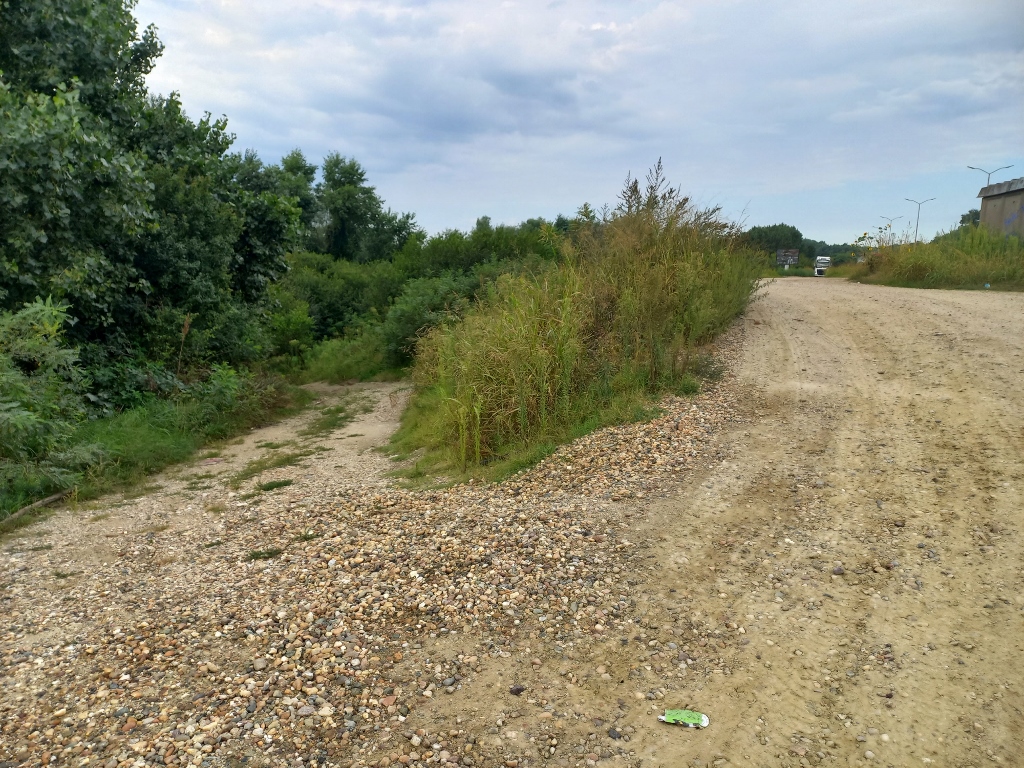 Main road from Belgrade to Pančevo is up to the right, while for our destination we had to go left
Main road from Belgrade to Pančevo is up to the right, while for our destination we had to go left
Even though it was early September, we were passing through a wooded area near the river, so this was a realm of mosquitoes. Luckily, we managed to get through unscathed.
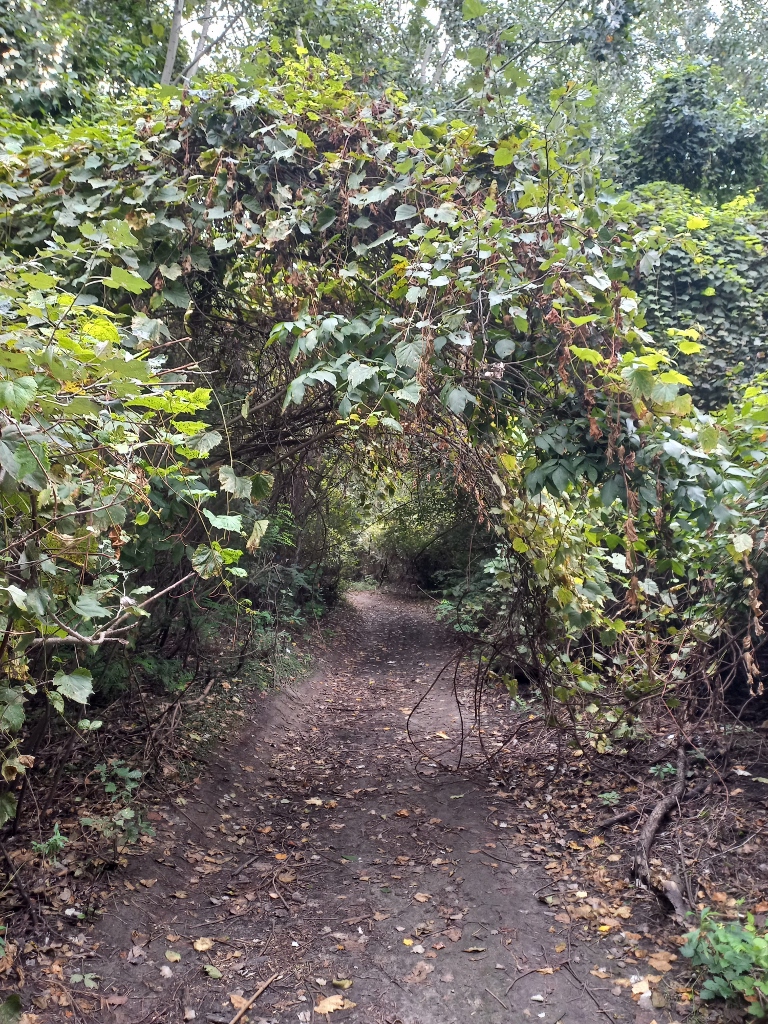 Path through the realm of mosquitoes
Path through the realm of mosquitoes
All of this was necessary so that we could reach the immovable cultural heritage of great significance. I must say that I think the vast majority of my compatriots have never even heard of this cultural monument. In fact, neither had I before I stumbled upon it while preparing material for this trip. It concerns the lighthouses at the confluence of the Tamiš and the Danube.
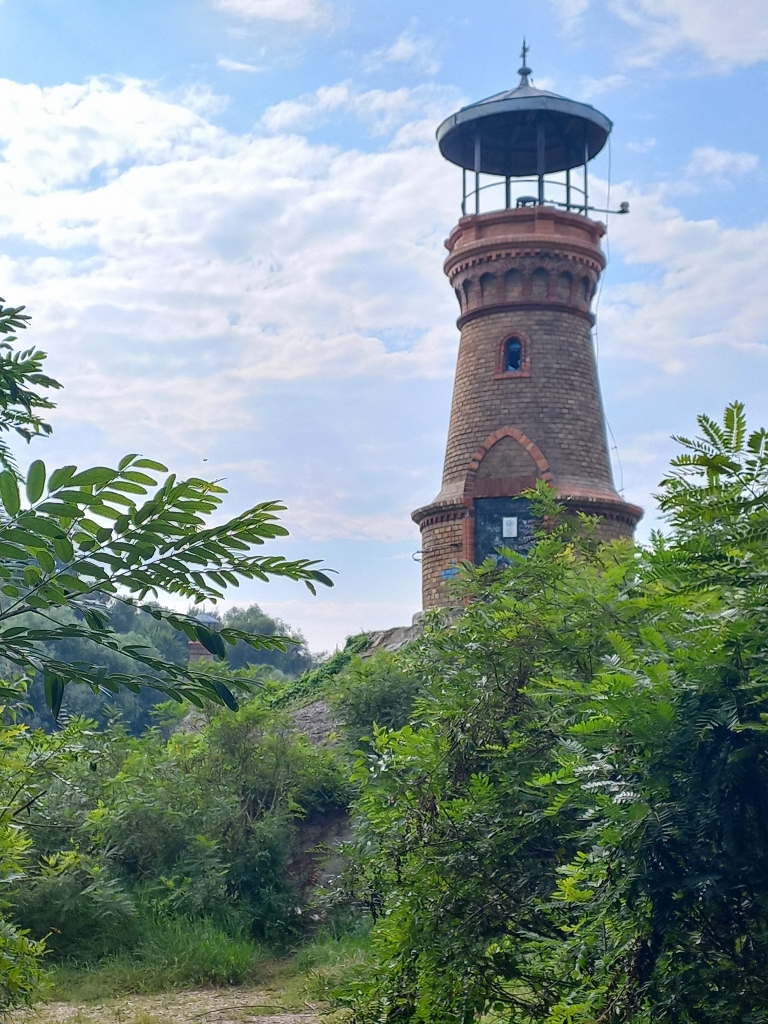 North lighthouse at the confluence of the Tamiš and the Danube
North lighthouse at the confluence of the Tamiš and the Danube
Namely, this pair of lighthouses was built in 1909 at the confluence of the Tamiš River and the Danube, on both banks, for the safety of water traffic. As paired lighthouses, they are the only ones of their kind along the entire course of the Danube. The path we took leads directly to the north lighthouse.
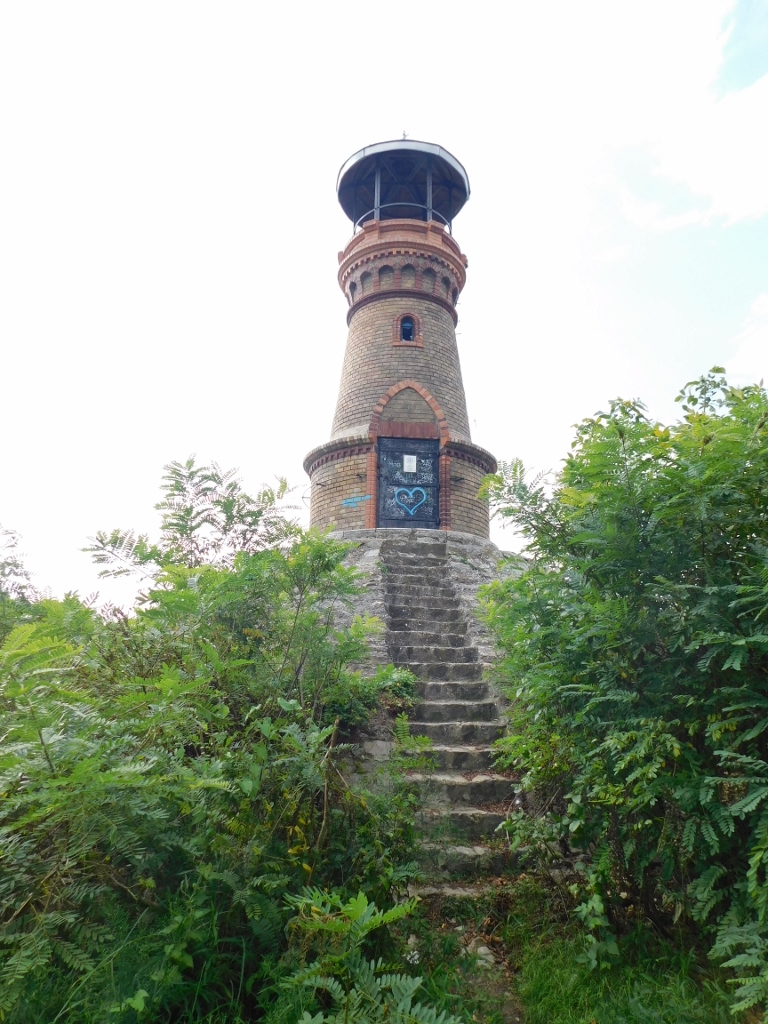 North lighthouse at the confluence of the Tamiš and the Danube
North lighthouse at the confluence of the Tamiš and the Danube
The lighthouses are erected on platforms and feature very beautiful and interesting architectural elements. The platforms themselves are made of earth but are stone-clad. The lighthouses are constructed from yellow brick, visually divided horizontally into three zones with lovely decorations, giving them a very charming appearance. However, some people have an unstoppable urge to vandalise anything they see, while the interior of the lighthouse I peeked into wasn’t inspiring either.
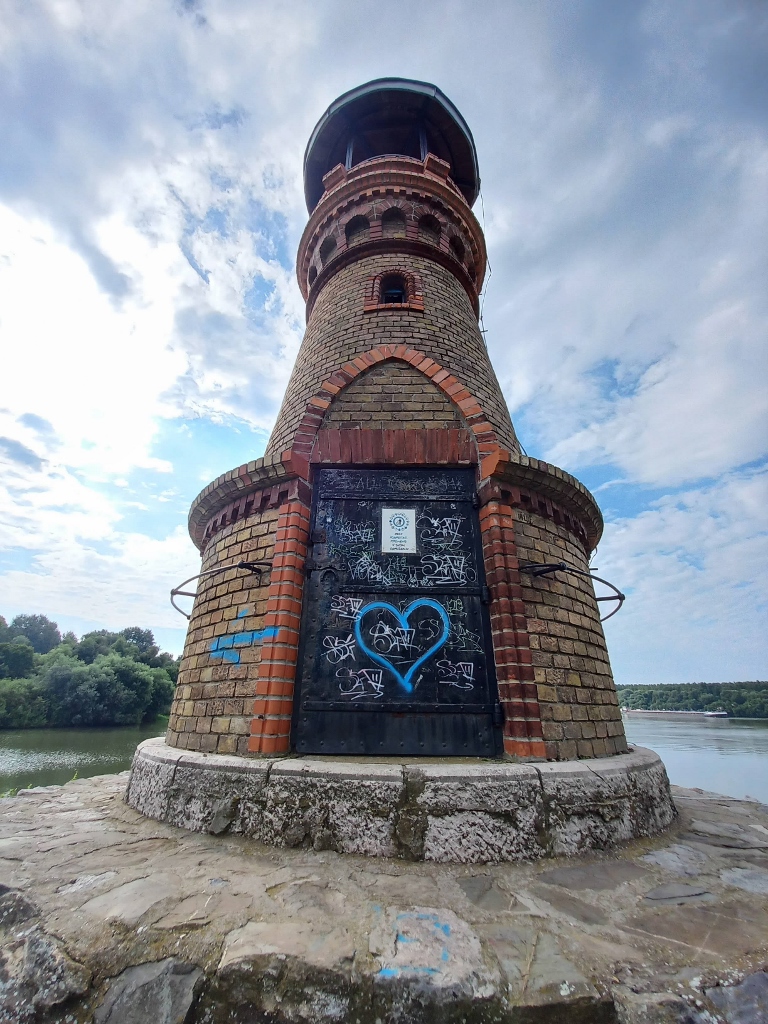 North lighthouse at the confluence of the Tamiš and the Danube
North lighthouse at the confluence of the Tamiš and the Danube
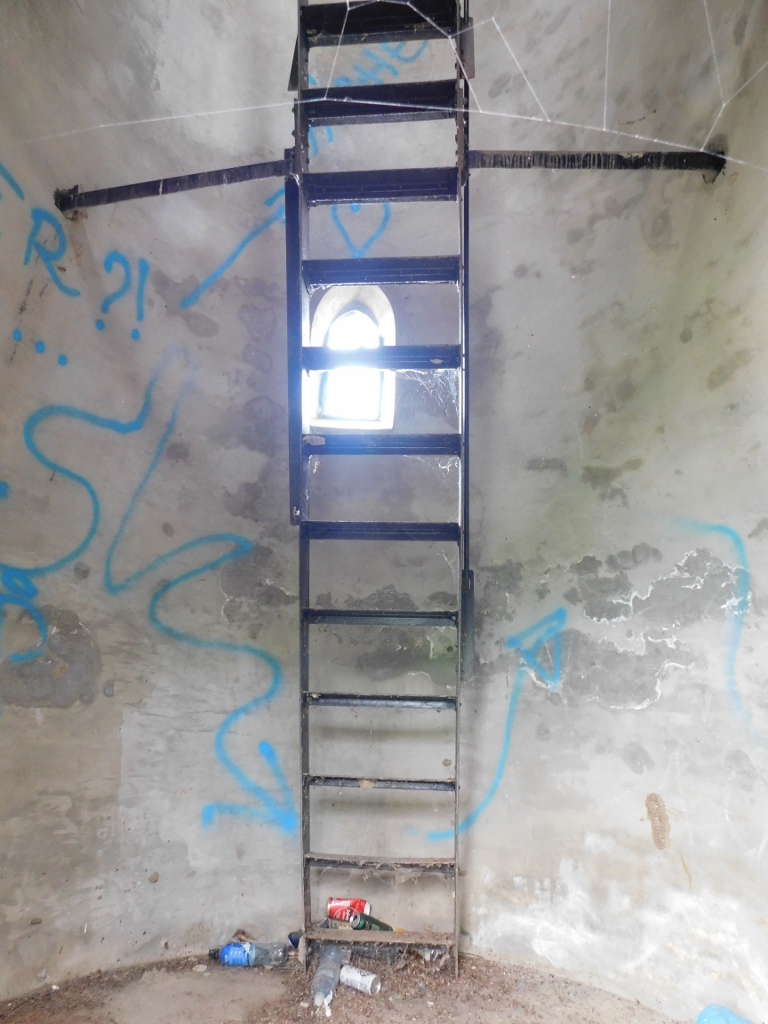 North lighthouse at the confluence of the Tamiš and the Danube, the interior
North lighthouse at the confluence of the Tamiš and the Danube, the interior
Then I paid a bit of attention to the south lighthouse that can also be reached but, of course, from the other side of the Tamiš River, which I didn’t plan to visit on this occasion.
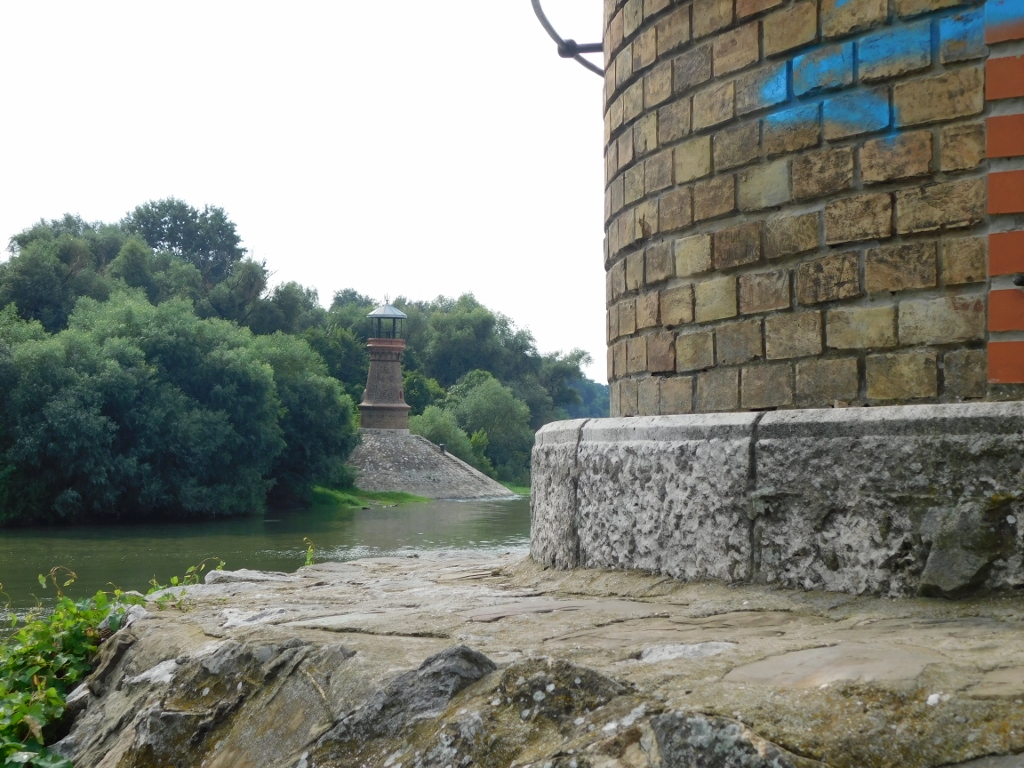 Lighthouses at the confluence of the Tamiš and the Danube
Lighthouses at the confluence of the Tamiš and the Danube
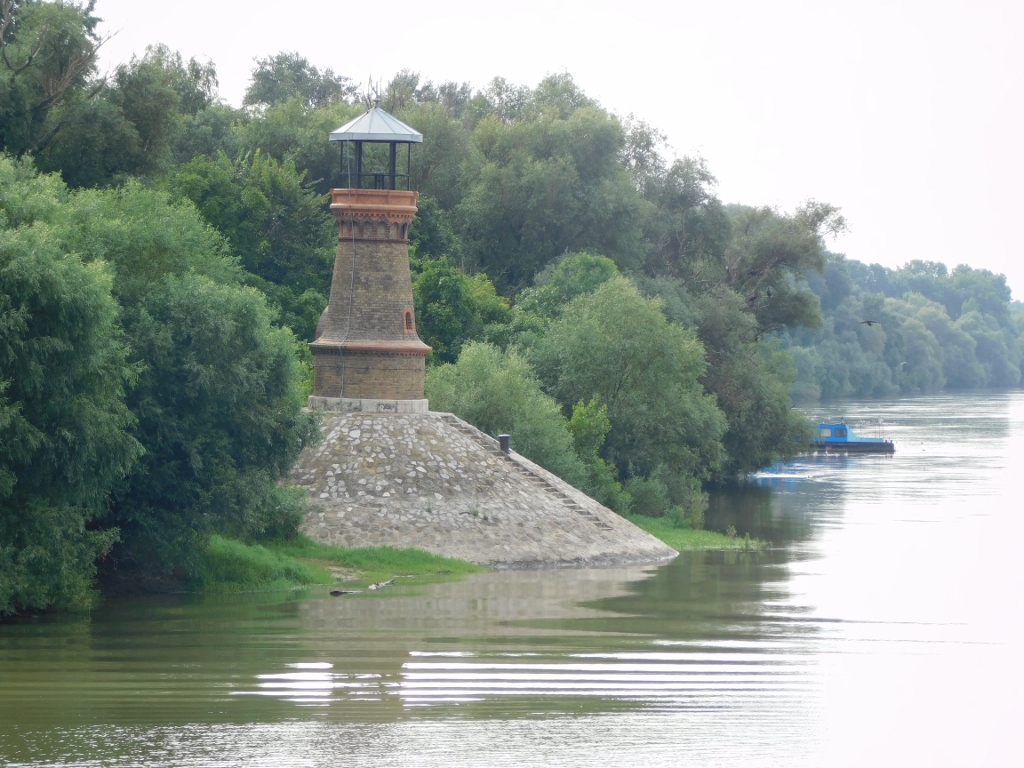 South lighthouse at the confluence of the Tamiš and the Danube
South lighthouse at the confluence of the Tamiš and the Danube
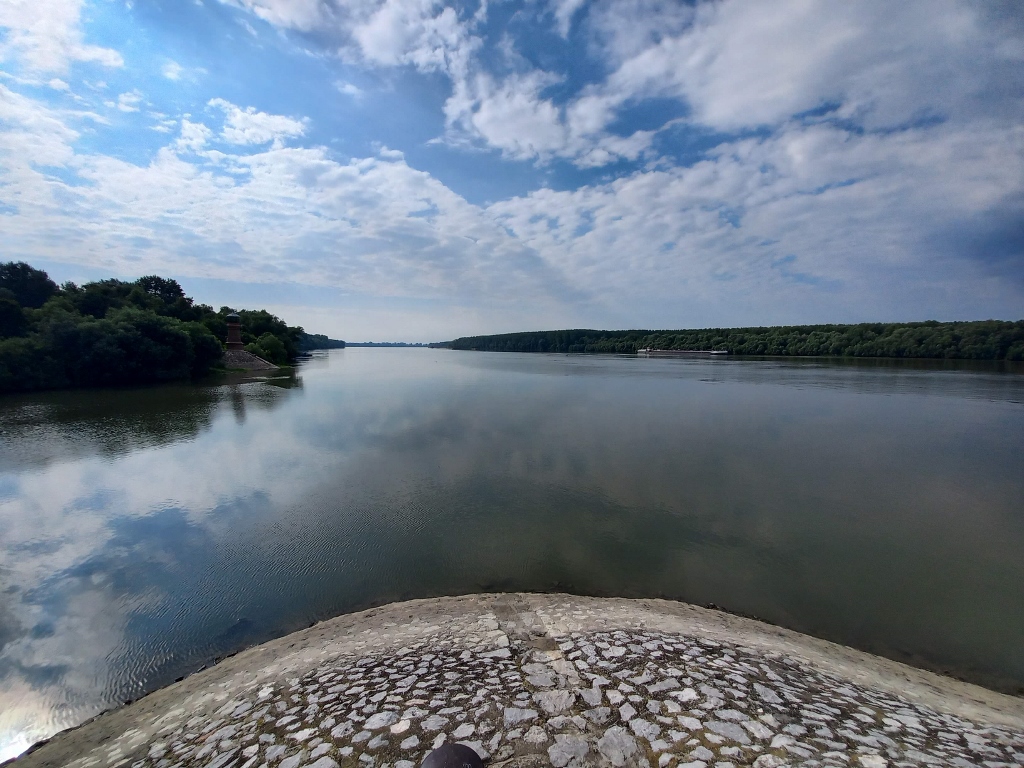 Confluence of the Tamiš (left) and the Danube (right)
Confluence of the Tamiš (left) and the Danube (right)
Meanwhile, down the Danube, seagulls were peacefully gliding along the river, almost like on their own scouting ship.
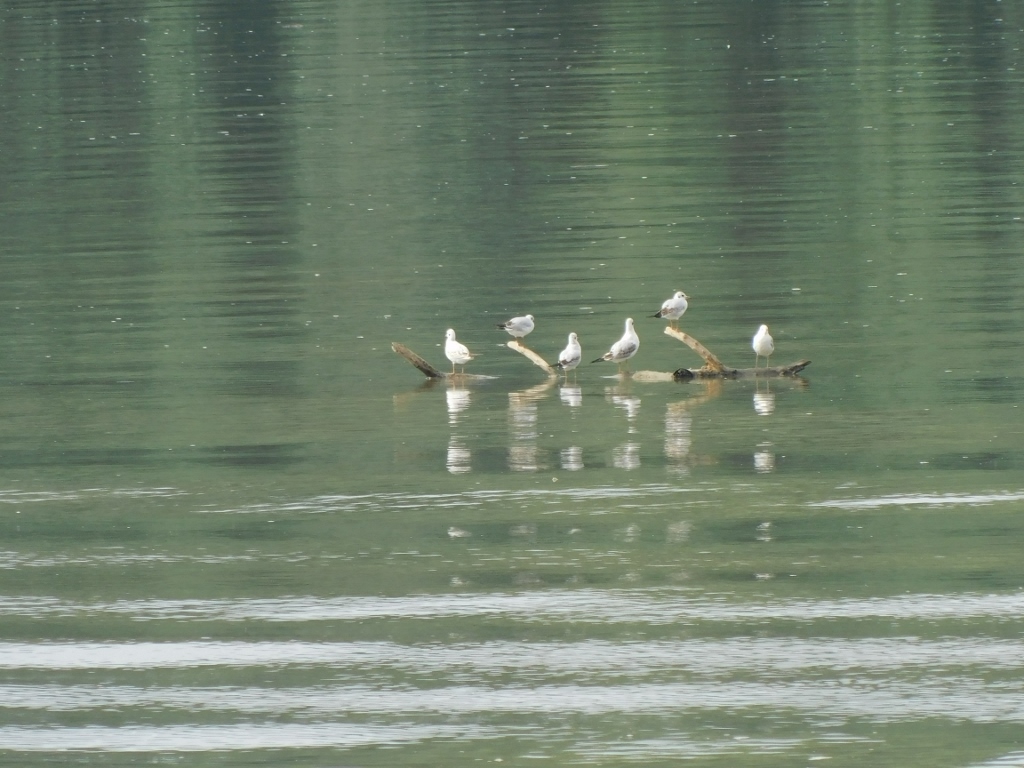 A detail from the Danube
A detail from the Danube
After this, we returned to the car and then continued on the main road towards Pančevo, but before entering the city centre, we turned towards Kovin. Soon, we arrived at Vojlovica Monastery, a cultural monument of exceptional importance that has the most unusual location for a monastery that I have ever seen.
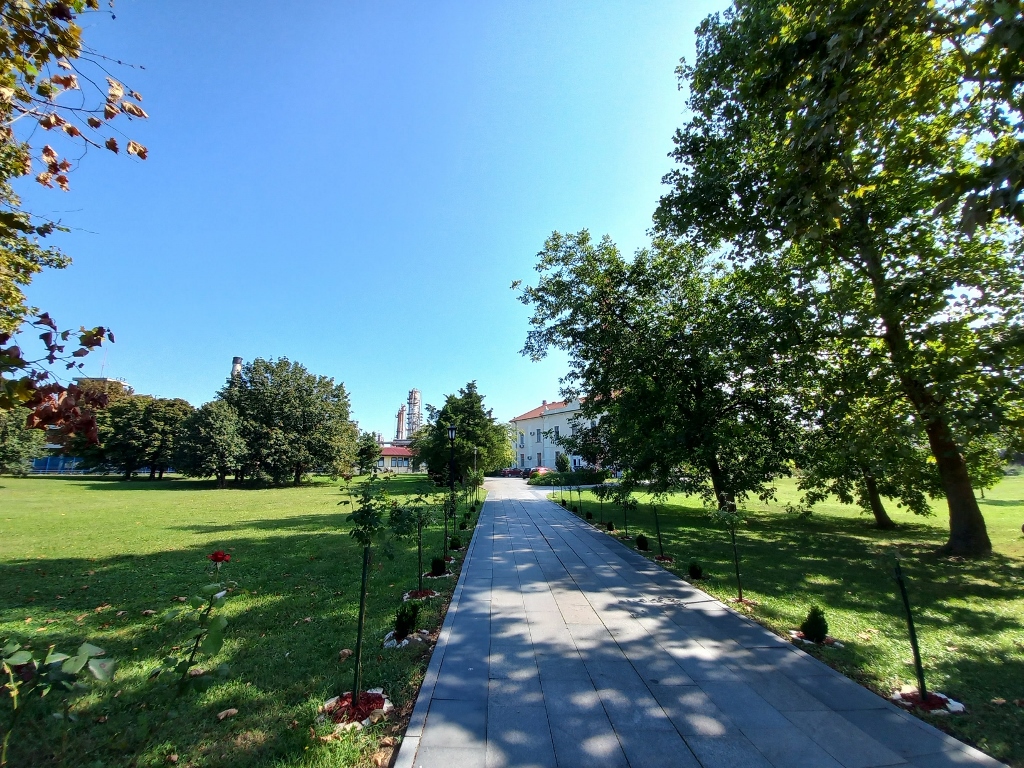 Vojlovica Monastery in Pančevo
Vojlovica Monastery in Pančevo
Namely, after World War II, the Pančevo Oil Refinery was built in the immediate vicinity of the monastery and over time it expanded even more. The monastery was inactive from 1964 to 1987 precisely because of the refinery’s surroundings. However, restoration and reconstruction followed, completed in 1991, and the monastery continued its existence. Nevertheless, the position of the monastery remains peculiar, but, in fact, it is the refinery’s location that is odd, considering the monastery was founded at the end of the 14th century. Unlike the chicken and the egg, here it is clear which came first.
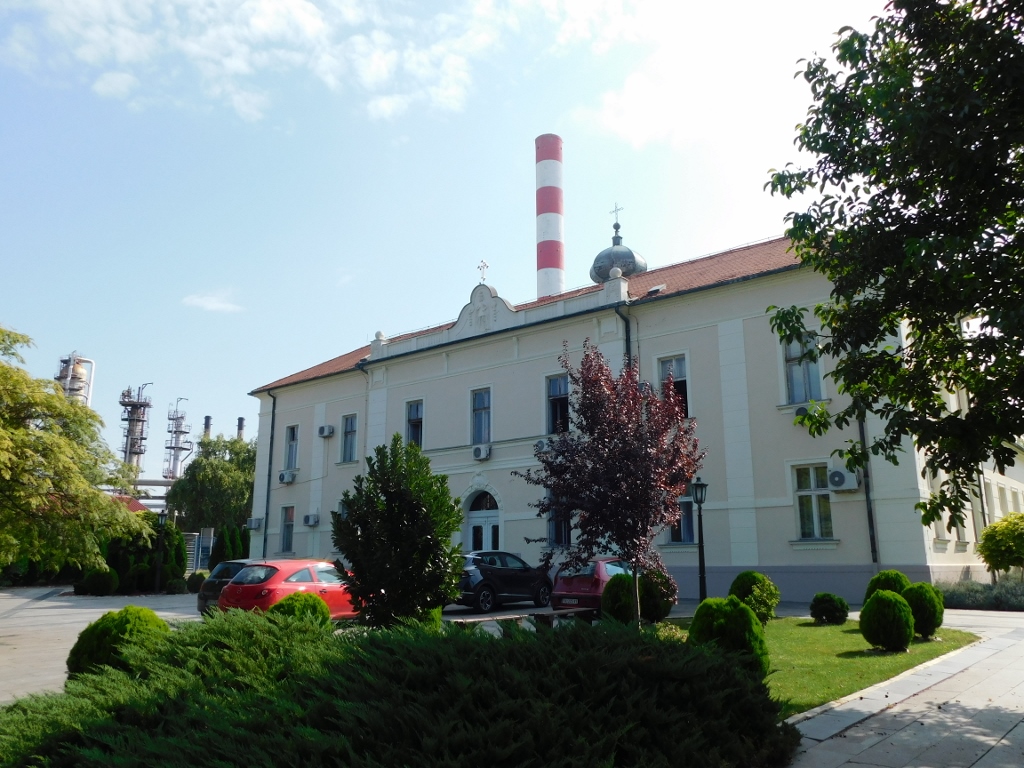 Vojlovica Monastery in Pančevo
Vojlovica Monastery in Pančevo
To reach the monastery church, you take the path to the left of the monastery building visible in the previous photo. The monastery and the church dedicated to St. Archangels Michael and Gabriel were, according to tradition, founded by Despot Stefan Lazarević. It is believed that one of the six charters issued by Despot Stefan in 1405 to various monasteries was the charter establishing Vojlovica. However, the oldest mention of the monastery comes from a book printed in Venice between 1536 and 1538.
The original single-nave church with a semicircular apse and a narthex, as well as a dome over the nave, had another narthex added in 1752, while in 1836, a tall Baroque bell tower was built, with certain modifications related to the narthex.
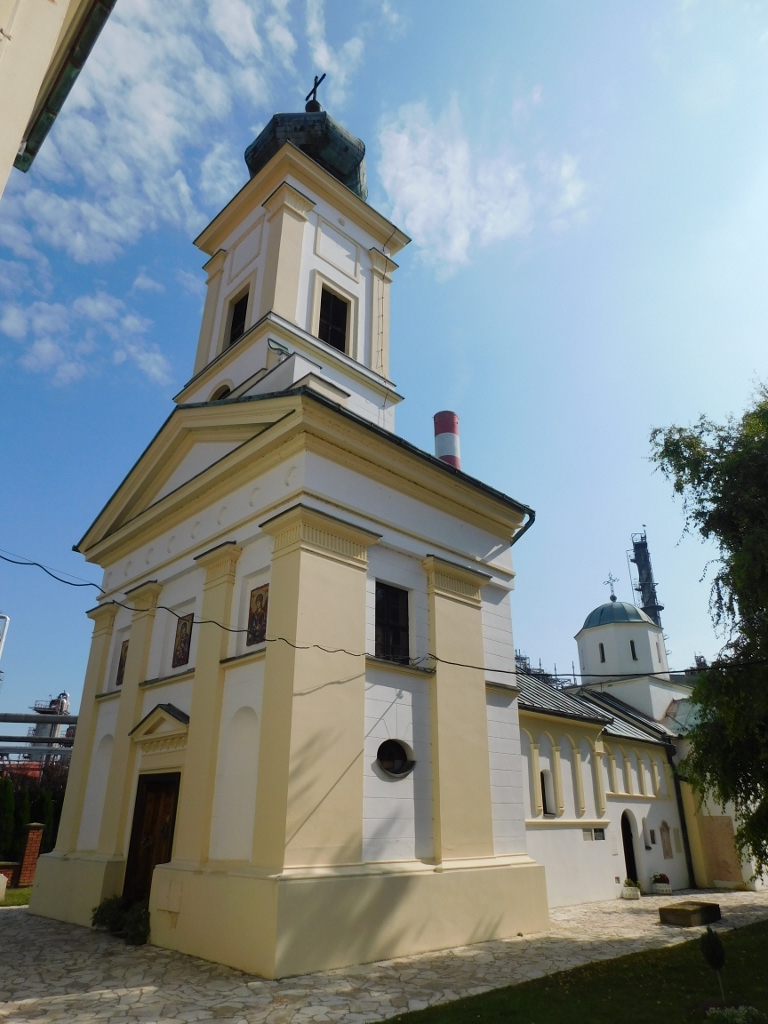 Church of Vojlovica Monastery in Pančevo
Church of Vojlovica Monastery in Pančevo
When you enter the church, you can see these different architectural elements, while steps lead down from the narthex to the nave.
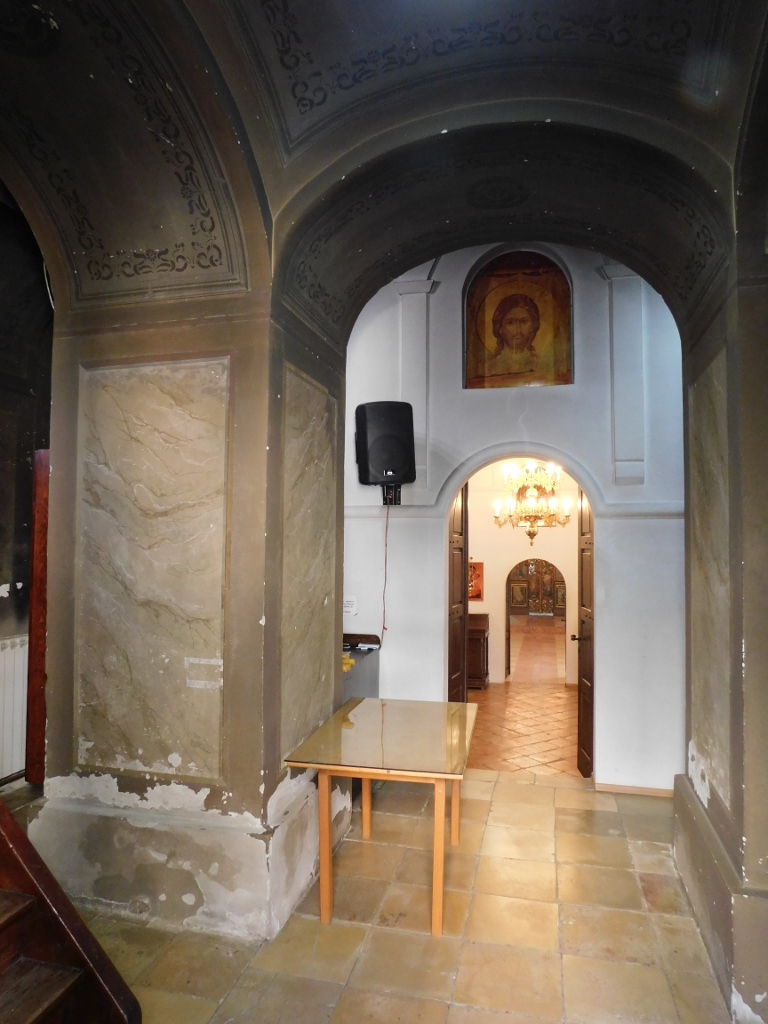 Church of Vojlovica Monastery in Pančevo
Church of Vojlovica Monastery in Pančevo
The monastery houses icons from the 18th and 19th centuries, while the iconostasis dates back to 1752.
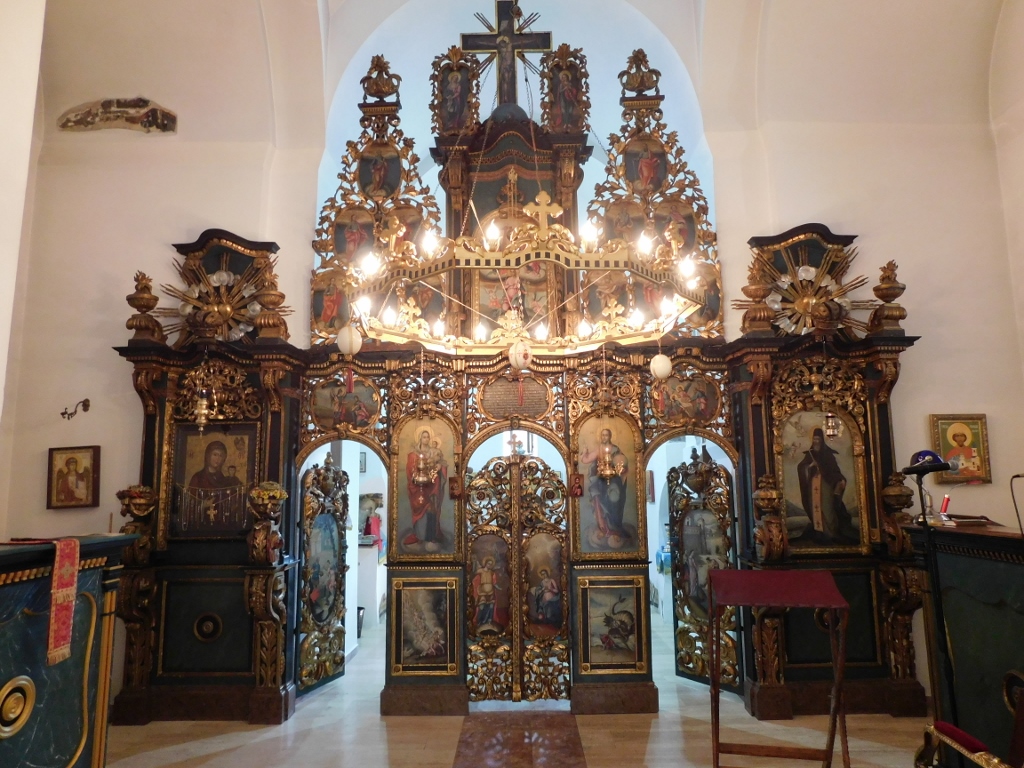 Church of Vojlovica Monastery in Pančevo
Church of Vojlovica Monastery in Pančevo
After visiting Vojlovica Monastery, Bilja and I left the city of Pančevo and drove to the nearby village of Starčevo, known for the archaeological site of the same name, representing an immovable cultural heritage of exceptional importance. However, when I was preparing for this trip, I learned that practically nothing remains visible at the archaeological site itself and one should instead visit the Starčevo Museum. So, I scheduled a visit to ensure it wouldn’t be closed, as it is a small museum in a small place and with a small number of visitors.
In the end, everything turned out great, but upon arriving in Starčevo, Bilja and I first went for coffee to wake up a bit more. Along the way, I noticed a beautifully decorated house, more precisely its side facade, in the centre of Starčevo.
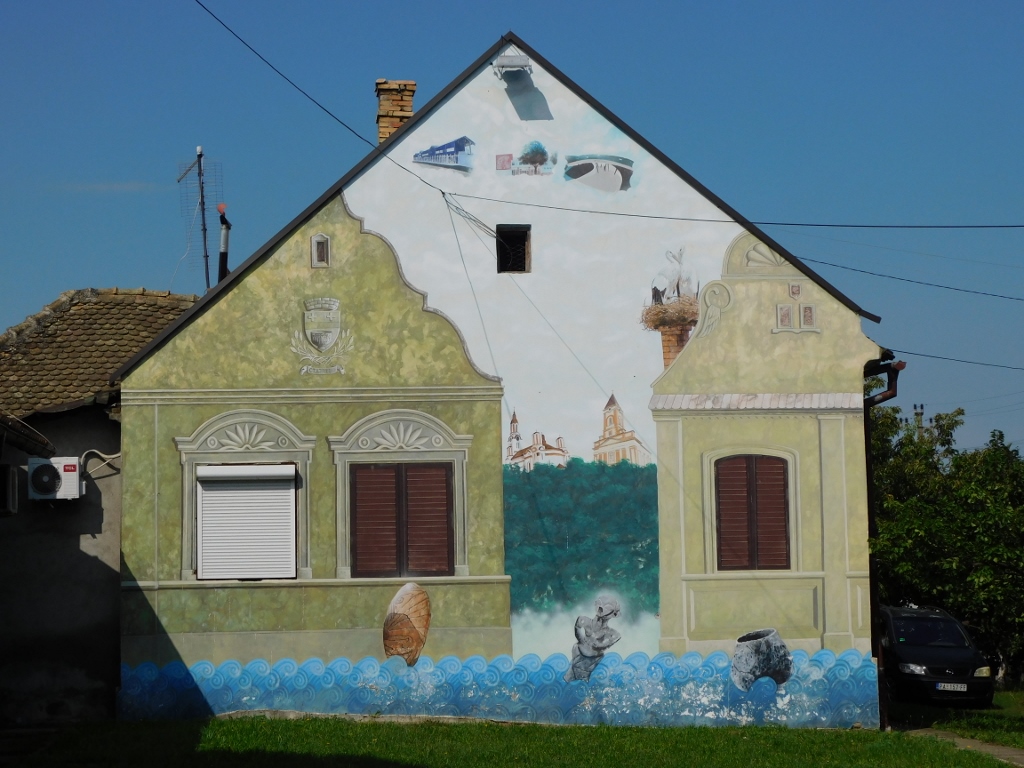 House in Starčevo
House in Starčevo
In addition, in the centre of Starčevo, there is a beautiful park and promenade called Neolithic Square (Trg Neolita) and there is also the Roman Catholic Church of Saint Maurice, built in 1870. Unfortunately, it was closed during our visit.
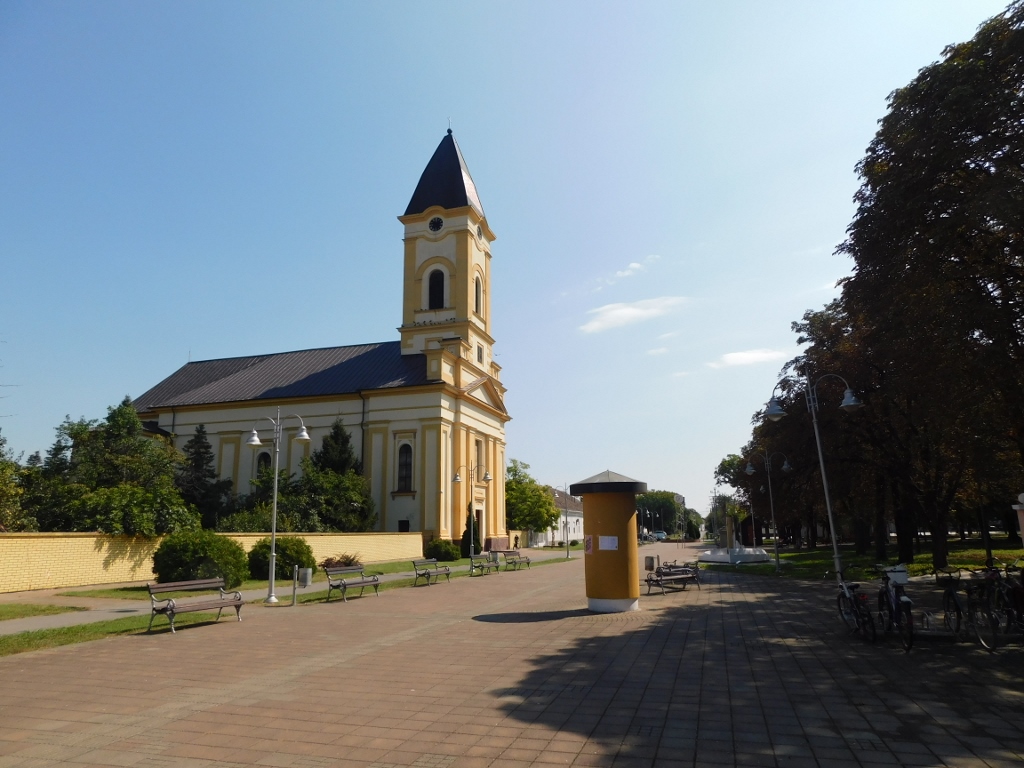 Trg Neolita and the Church of Saint Maurice
Trg Neolita and the Church of Saint Maurice
Across from the church, there is a fountain dedicated to the Neolithic period and two very interesting concrete sculptures, created and installed over a century ago. The crucifixion sculptures are the work of an unknown artist and were donated by a certain Nikola Žalac. What is particularly interesting about them is that the crucifixions are depicted differently – one shows crucified Christ in the manner most commonly depicted in the Roman Catholic world, while the other is more in line with the Orthodox iconography. It is assumed that the idea was precisely to bring different denominations together in Christ, which is always desirable and recommended.
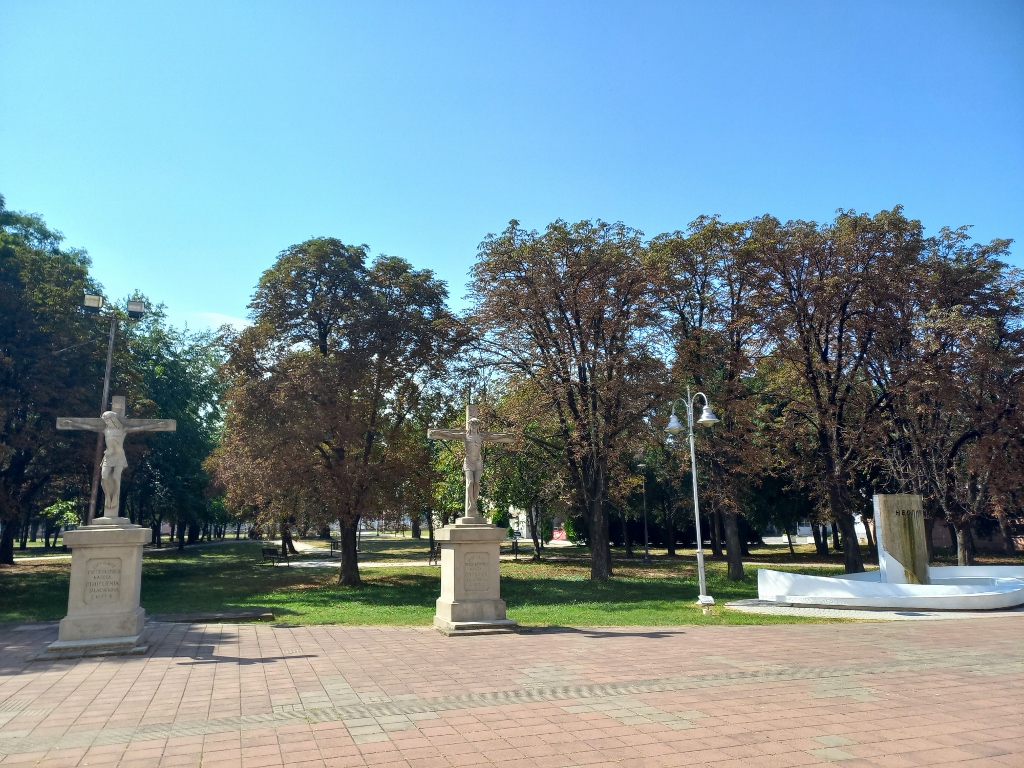 Sculptures and the fountain at the Neolithic Square
Sculptures and the fountain at the Neolithic Square
Right after the church, there is a building that houses the Starčevo Museum. Almost the entire exhibition of this small museum is dedicated to the archaeological site located on the left bank of the Danube, 8 km southeast of Pančevo. The finds discovered here belong to the Neolithic period and due to their exceptional significance, the culture of the Middle Neolithic period in the central Balkans was named the Starčevo culture. The duration of this culture is placed in the period from around 6200 to around 5500 BCE.
The first finds from the Starčevo site came into the possession of the National Museum in Belgrade and the National Museum in Pančevo in 1912, thanks to the work of a local brickyard. Subsequently, archaeological excavations at the site began in 1928. A few years later, researchers from several universities in the United States were also present, collaborating with the National Museum in Belgrade. Excavations continued both on the site and in the surrounding area, with the latest ones conducted in the early 21st century.
At the site, semi-subterranean dugouts, mostly of elliptical shape and measuring 2-6 metres in length, were discovered. In some of these dugouts, remains of hearths were found, and several graves were also discovered. However, probably the most important part of the finds includes pieces of pottery, polished stone axes and blades, and numerous bone tools. Most of these artefacts can be seen at the National Museum in Pančevo, while here in Starčevo, only replicas or photographs are on display.
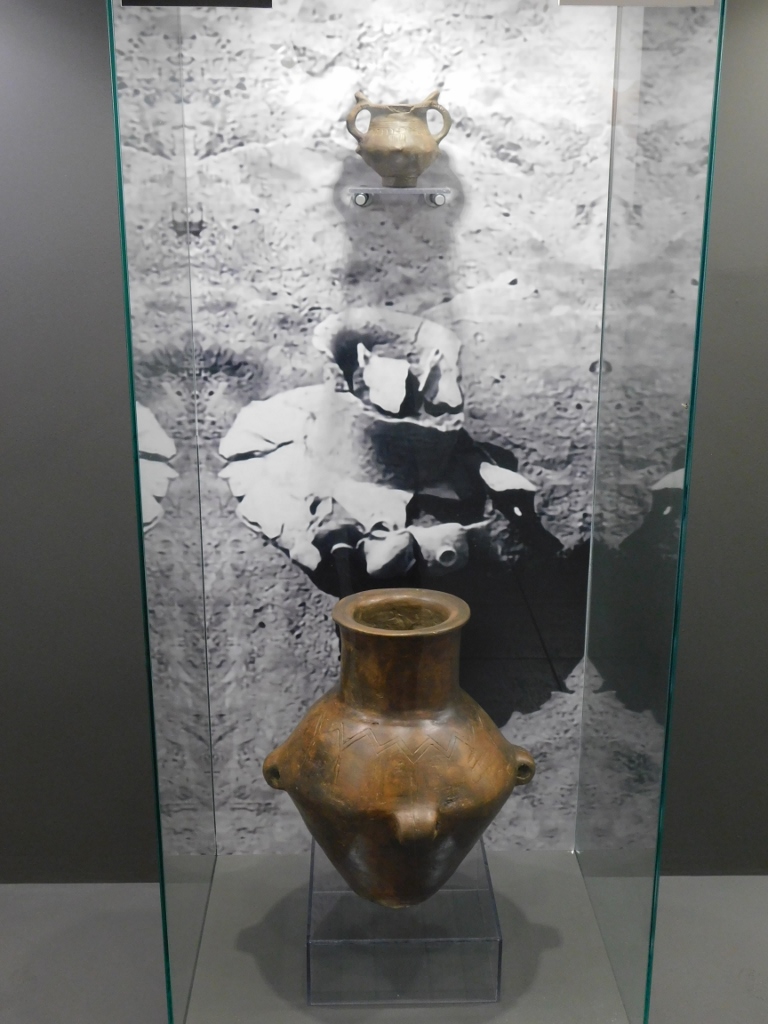 The Starčevo Museum, a detail
The Starčevo Museum, a detail
During the period of the Starčevo culture, permanent settlements began to appear near land suitable for cultivation, as Neolithic people had already started cultivating cereals. Additionally, the first domesticated animals – cattle, sheep, pigs, and goats – became a part of their lifestyle. Due to these developments, the members of the Starčevo culture are considered the first farmers in Europe. Pottery was also well-developed during this period.
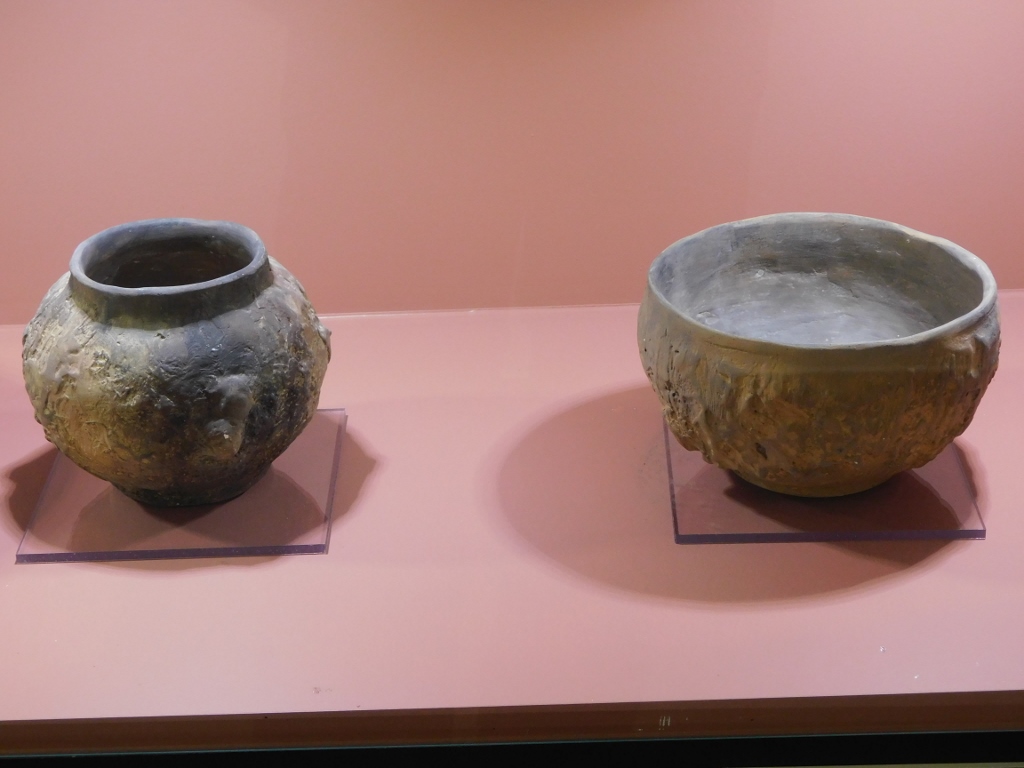 The Starčevo Museum, a detail
The Starčevo Museum, a detail
Not far from Starčevo, although on the right bank of the Danube, is the site of Vinča, after which the Neolithic culture whose remains were found there is named – the Vinča culture. It practically succeeded the Starčevo culture and lasted from around 5200 to around 4300 BCE. (By the way, the years I mention here should be taken with caution, since astonishingly different sources provide different years for these cultures, with discrepancies reaching a thousand or more years. I would expect scientists to have already reached an agreement on such basic data.)
So, the life in the area of the present-day Starčevo continued during the Vinča culture, which, among other things, is characterised by the establishment of settlements. During this period, agriculture and pottery production were also perfected.
The region was inhabited during the Copper Age as well. Considering the fertile soil and the proximity to a large river, people continued to live here in later periods. The museum also follows the developments during the Bronze Age, the Migration Period and later in the Middle Ages.
The specific origin of the present-day settlement of Starčevo is linked to two possible events – the Great Migrations of the Serbs in 1690 or the end of the Great Turkish War in 1699. In any case, the first written mention of Starčevo dates back to 1717, while its inhabitants at that time were Serbs.
As Starčevo is located in the close proximity to the Danube, which served as the border between the Austro-Hungarian and Ottoman Empires in the 18th and 19th centuries, there were conflicts between these two states, but without dramatic events. On the other hand, the structure and ethnic composition of the population changed over time.
A part of the Starčevo Museum also focuses on presenting an ethnological collection and this is also very well displayed.
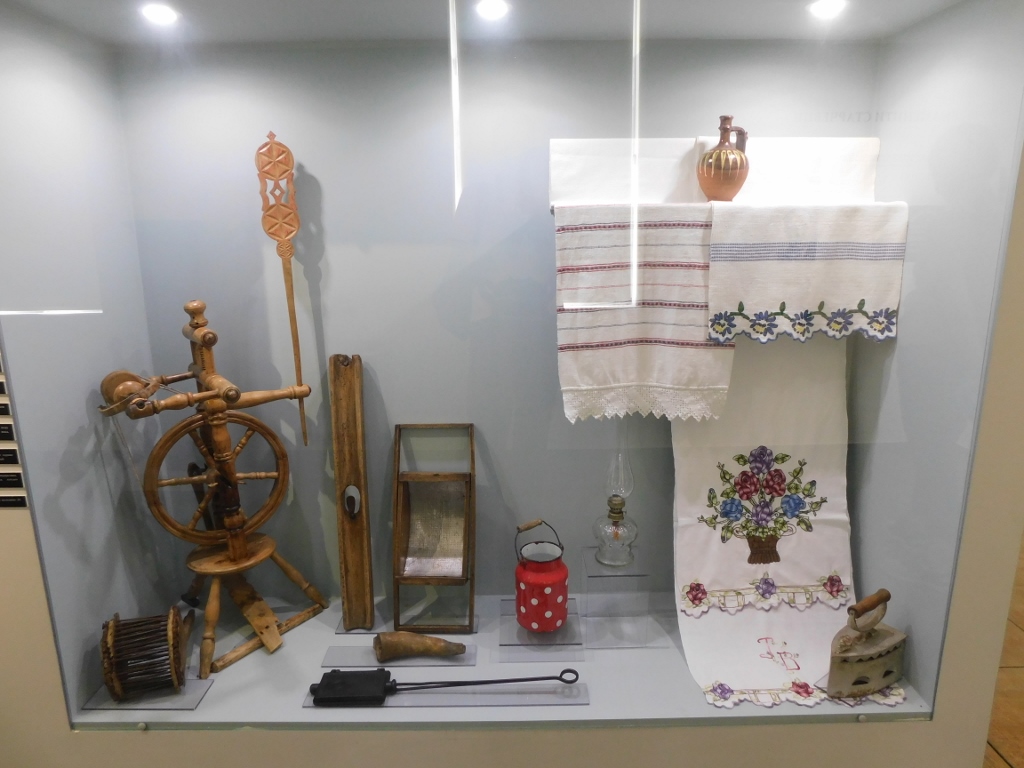 The Starčevo Museum, a detail
The Starčevo Museum, a detail
Once we had finished touring the museum building, we went to the back courtyard, where replicas of the dugouts made in Neolithic Starčevo can be seen. Of course, I had to squeeze myself into one of these dugouts.
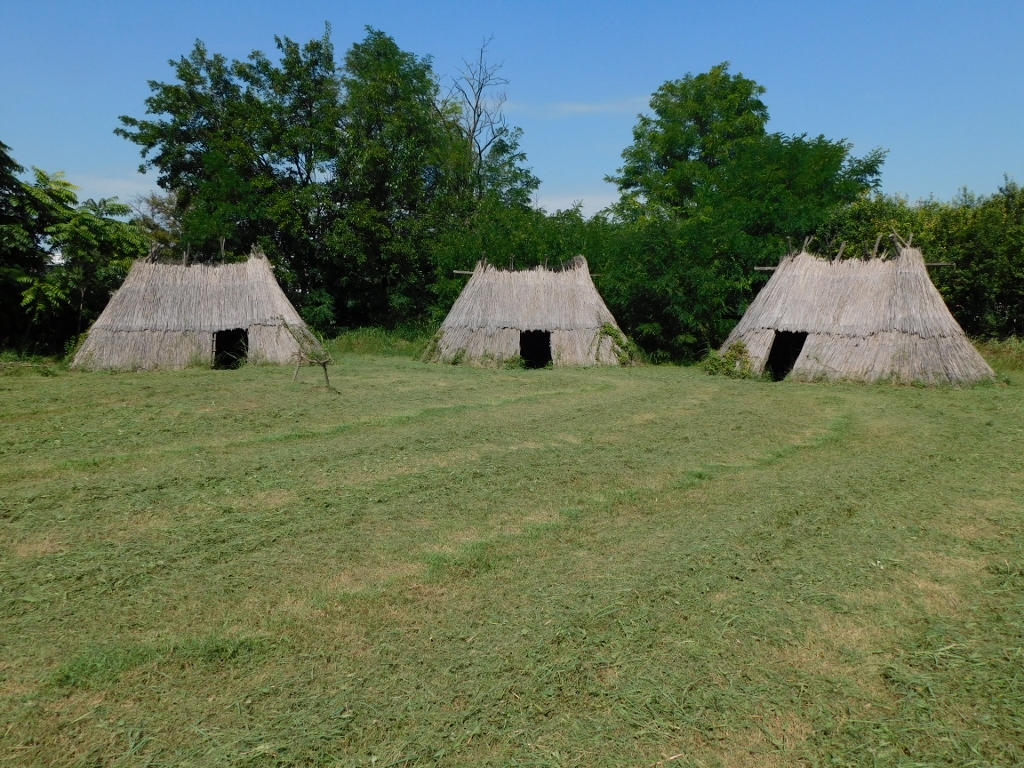 The Starčevo Museum, a detail
The Starčevo Museum, a detail
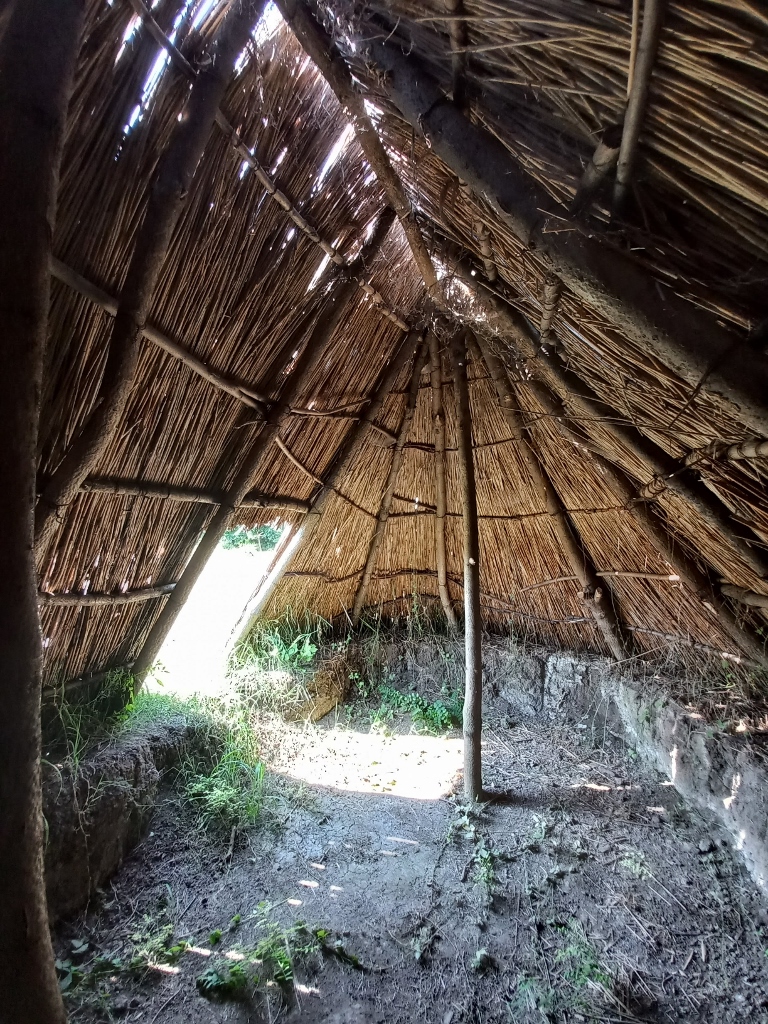 The Starčevo Museum, a detail
The Starčevo Museum, a detail
When we finished with the visit to the museum and said goodbye to the friendly host, Bilja and I drove to the nearby village of Omoljica, also located in the municipality of Pančevo. Here, we were supposed to see the Military Frontier Building, a cultural monument.
I must admit that we wandered a bit since my initial map and some information I had were not very precise, but we eventually found the building, which actually seems quite modest and, if I may say, ordinary.
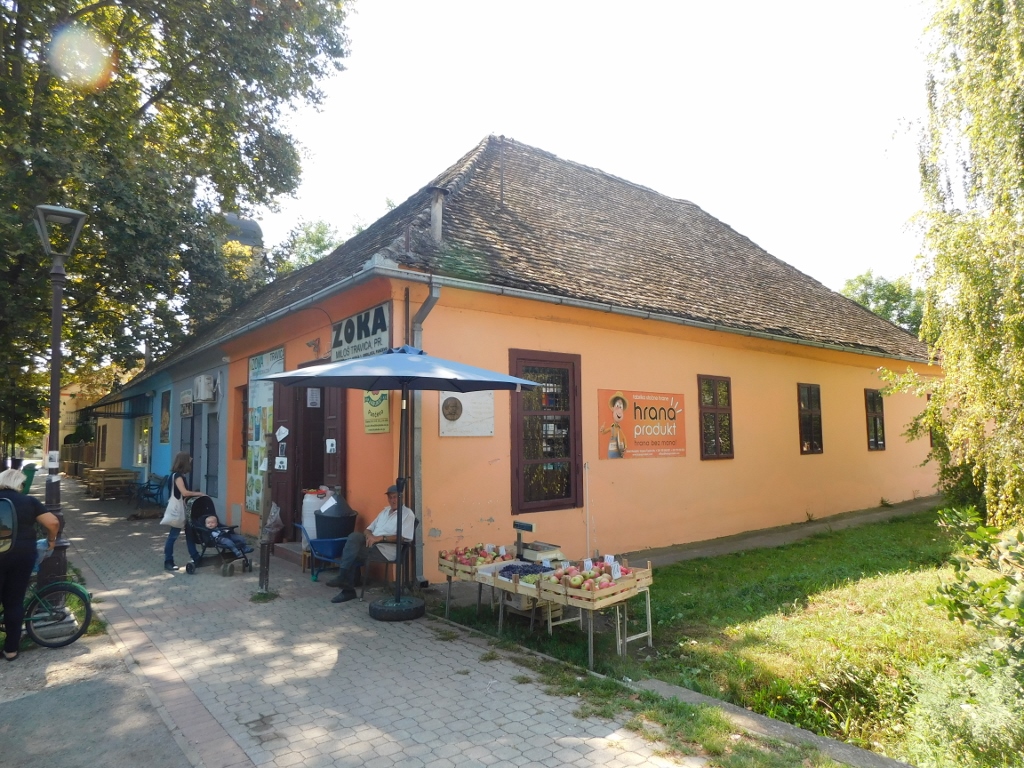 Military Frontier Building in Omoljica
Military Frontier Building in Omoljica
It is a building that was erected during the existence of the Military Frontier (1763-1873), most likely at the end of the 18th century (I found information about the year 1766, making this building the oldest in the village). Due to the constant tensions between the Habsburg Monarchy and the Ottoman Empire, it was necessary to secure the border since, as a result of the Treaty of Belgrade in 1739, the Habsburg Monarchy had to demolish its fortresses along the Danube. Therefore, border patrols and militia were strengthened and systematically organised in order to provide protection against military incursions and illegal crossings from the Ottoman Empire, as well as to establish a health cordon (due to the potential spread of infectious diseases) and reduce cross-border smuggling.
This building in Omoljica served as the headquarters of the 12th Regiment, possibly also functioning as a barracks, but I only took external photos. Bilja and I took advantage of the presence of a man selling fruits there, so we bought some nice apples and grapes. I also noticed a plaque on the building commemorating an event from 1813 when Vuk Stefanović Karadžić stayed in Omoljica. Regarding the significance of Vuk Karadžić for Serbia, the Serbs and Serbian culture in the broadest sense, see: https://www.svudapodji.com/en/banja-koviljaca-6/.
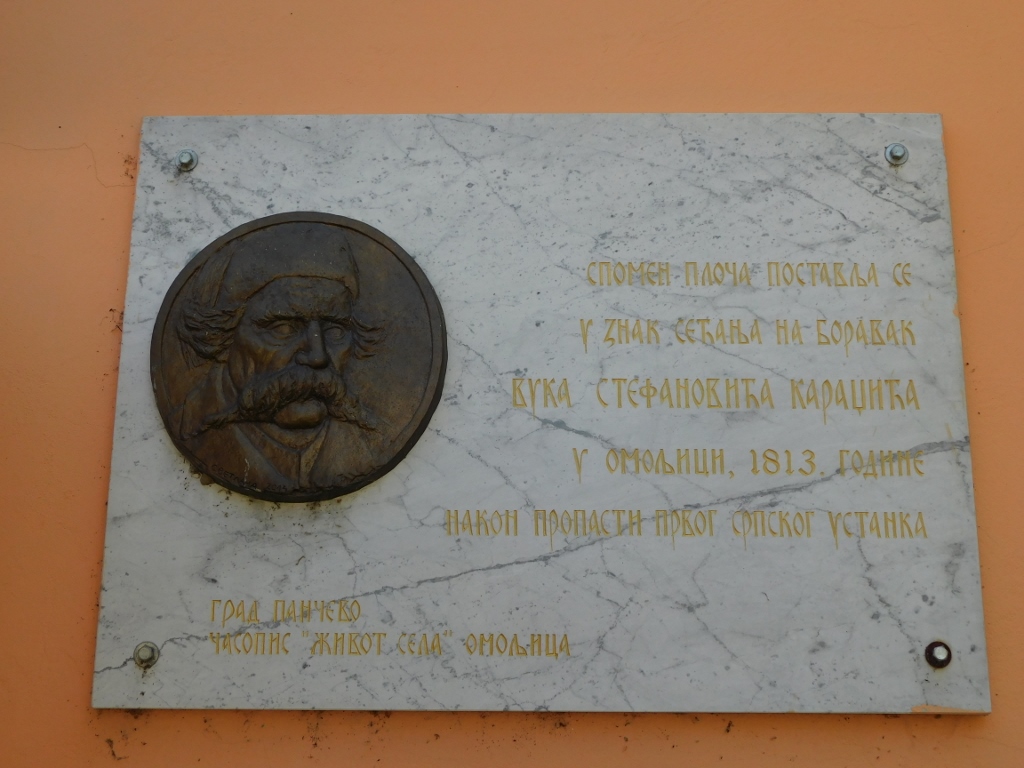 Military Frontier Building in Omoljica, a detail
Military Frontier Building in Omoljica, a detail
The centre of Omoljica seemed like a beautiful area to me, so we took a stroll, primarily around the Seoski Park (Village Park).
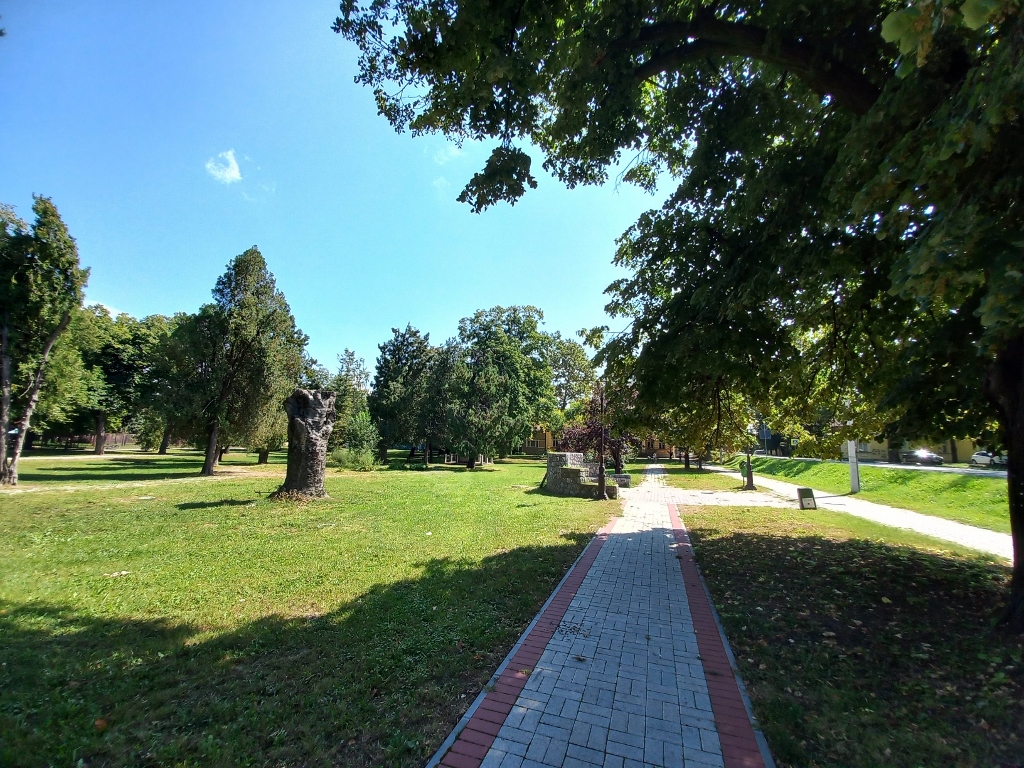 Seoski park (Village Park) in Omoljica
Seoski park (Village Park) in Omoljica
Here, I noticed right away the remains of a large tree and there is also a sign indicating the type of tree. Specifically, until the beginning of 2023, a copper beech (Fagus sylvatica f. purpurea), representing a natural monument, had been growing here. However, in the previous years, it was established that the beech was old and sick, with some damage on it as well. A year earlier, its leaves had dried up by early summer, leading to the decision to remove the tree. The trunk remains and there is currently an initiative to create a sculpture from it, reminiscent of the original tree. However, circling around the trunk, I noticed some small shoots at the top. I don’t know whether the beech still has life in it or if it’s something entirely different, but there’s evidence nonetheless.
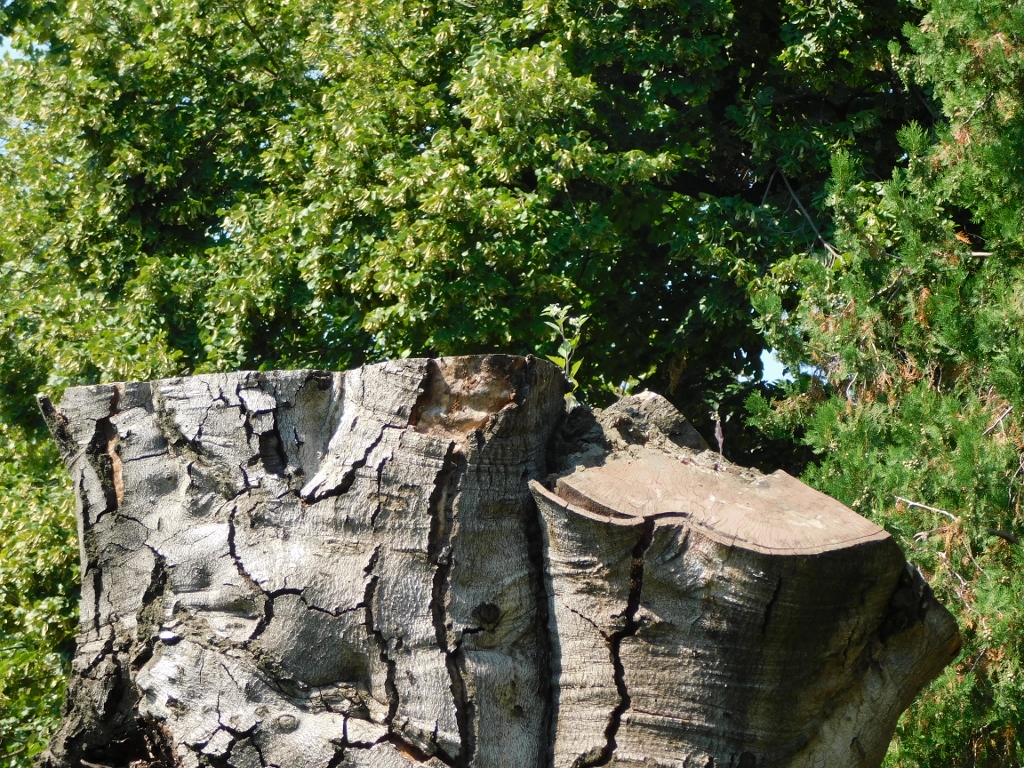 Top of the copper beech trunk in Omoljica at the beginning of September 2023
Top of the copper beech trunk in Omoljica at the beginning of September 2023
By the way, since I’m mentioning nature, Omoljica has the Nature Park Ponjavica in its surroundings and from the village you can easily reach the Ivanovačka Ada Nature Monument located on the Danube in the neighbouring village of Ivanovo. So, Omoljica is a place of multiple interests. I definitely plan to come back here and visit these two interesting sites related to nature and its beauty.
Regarding human activities, next to the Village Park, there is an impressive building marked on Google Maps as the Old Omoljica Municipality, but I couldn’t find any information about it.
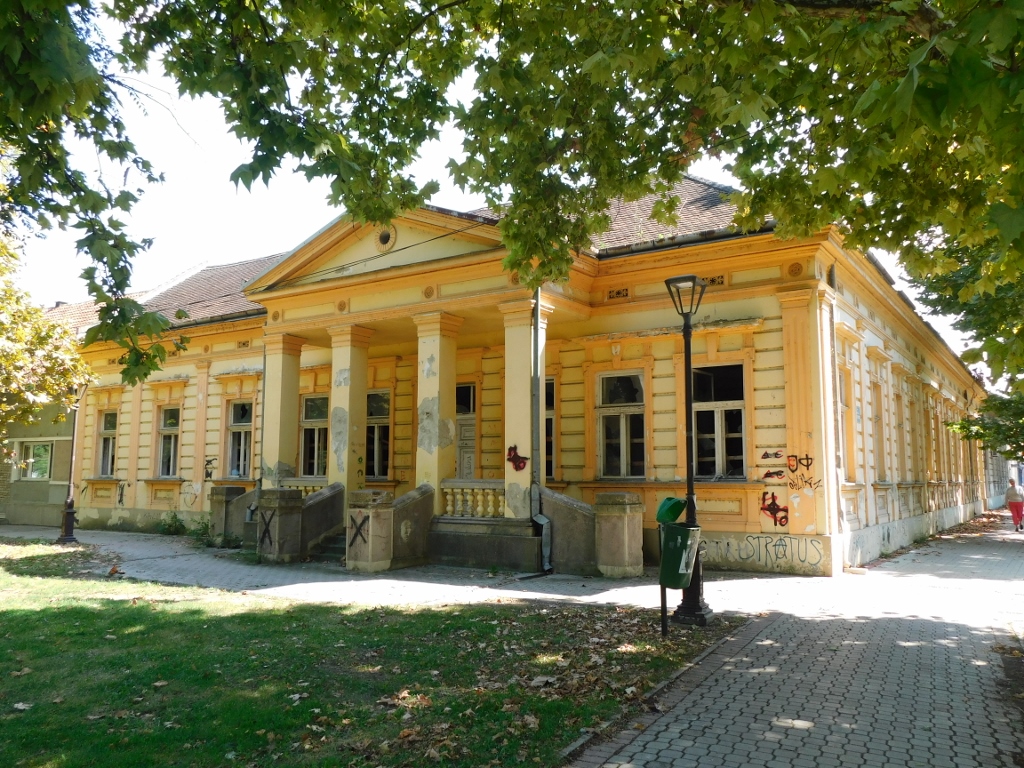 Old Omoljica Municipality
Old Omoljica Municipality
In the park, there is also a monument erected by the residents of Omoljica to two Red Army soldiers “as a sign of love and loyalty to the Soviet Union.”
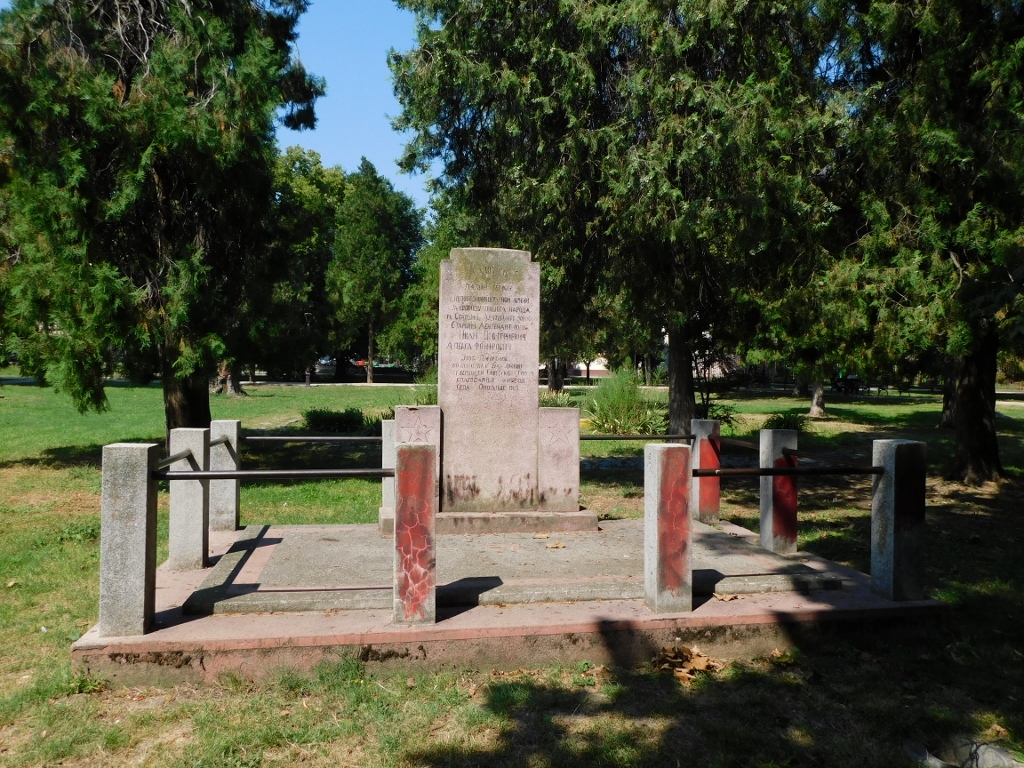 Monument in the Village Park in Omoljica
Monument in the Village Park in Omoljica
Within the territory of the village of Omoljica, there is the site “Preko Slatine.” This is an archaeological site with remains of the foundations of a church, a small settlement and a cemetery dating back to the 12th-13th centuries. However, I only had general information about the exact location of this site and it seems that it is not organised or accessible for visitors. Therefore, it didn’t make much sense for Bilja and me to embark on a search without knowing the precise directions or whether anything could be seen on the surface.
So, this is left for a potential future opportunity and we continued to Kovin, specifically to the Danube branch called Kovinski Dunavac.
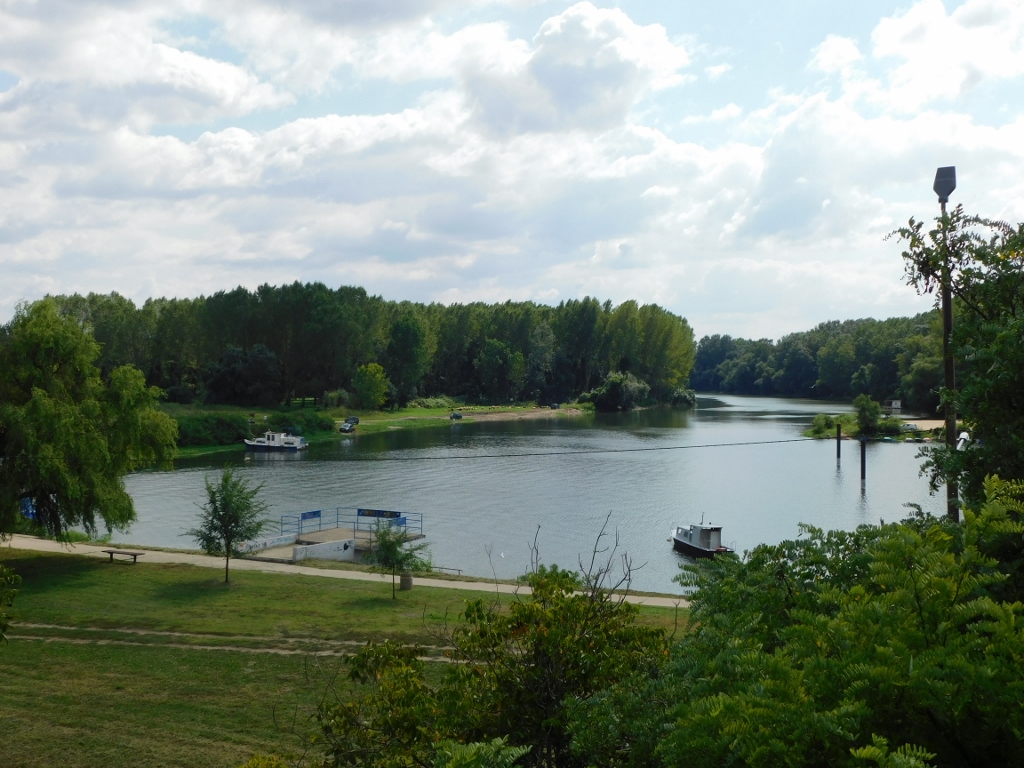 Kovinski Dunavac
Kovinski Dunavac
I believe it would be nice to come here and take a stroll along the river, but Bilja and I only observed it from an elevated position where the remains of a fortress are located. That’s what we actually came to see, since it represents a cultural monument of great significance.
The medieval fortress of Kovin was built from the 11th to the 12th century on the right bank of the Danube on a small elevation. Its purpose was to defend the southern border of the Hungarian state and it continued to function until 1739 when the Treaty of Belgrade was signed and when it was demolished. Interestingly, there was a settlement here during the Roman Empire called Contra Margum and its remains, in the form of bricks, were found during archaeological excavations.
Today, due to the dense vegetation covering the area of the former fortress as part of the Stari Grad Park (Old Town Park), its remains are practically hidden. However, a visit to this place is still worth your while. For those interested, there is a hotel with a restaurant where one can stay or dine/drink. The stroll through the park is enjoyable in itself.
At the top of the elevation, a large model of the Danube’s course has been created, covering the entire space. There are also markings in several places indicating which settlement is located at the corresponding spot on the model. It was easy for me to recognise the topography of Belgrade even without the markings.
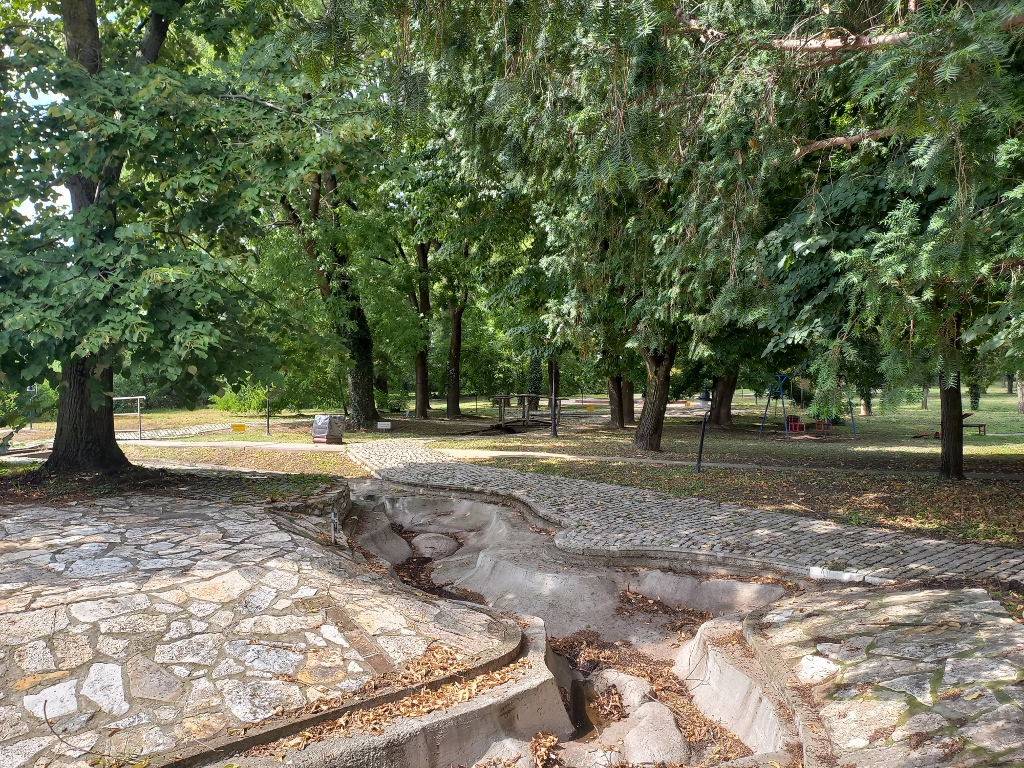 Stari grad Park
Stari grad Park
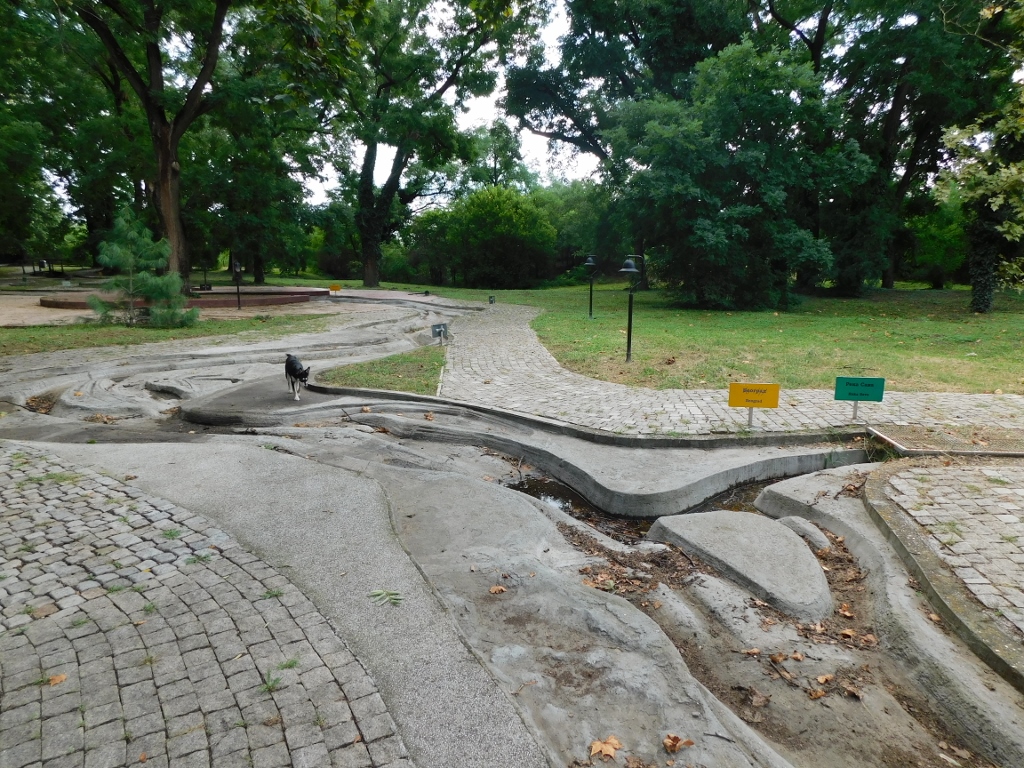 Stari grad Park, model of the confluence of the Sava and the Danube in Belgrade
Stari grad Park, model of the confluence of the Sava and the Danube in Belgrade
After a pleasant short walk in the Stari Grad Park, we drove to the Serbian Orthodox Church of St. Archangels in Kovin which is an immovable cultural property of great significance.
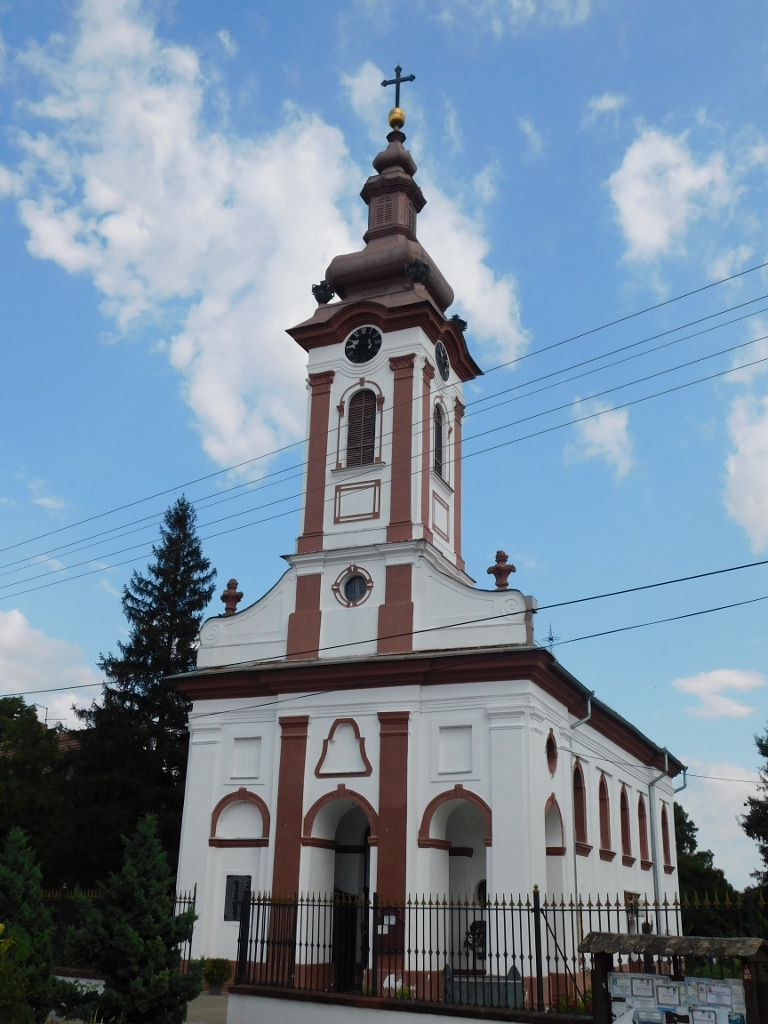 Serbian Orthodox Church of St. Archangels in Kovin
Serbian Orthodox Church of St. Archangels in Kovin
The church was constructed between 1777 and 1780, while its iconostasis likely dates back to the late 18th or early 19th century. Although I have read very nice descriptions related to the iconostasis, icons and the entire interior of the church, unfortunately, I couldn’t see it myself because the church was closed. Bilja and I only entered the churchyard and I even rang the doorbell of the house where I think the priest lives, but there was no one.
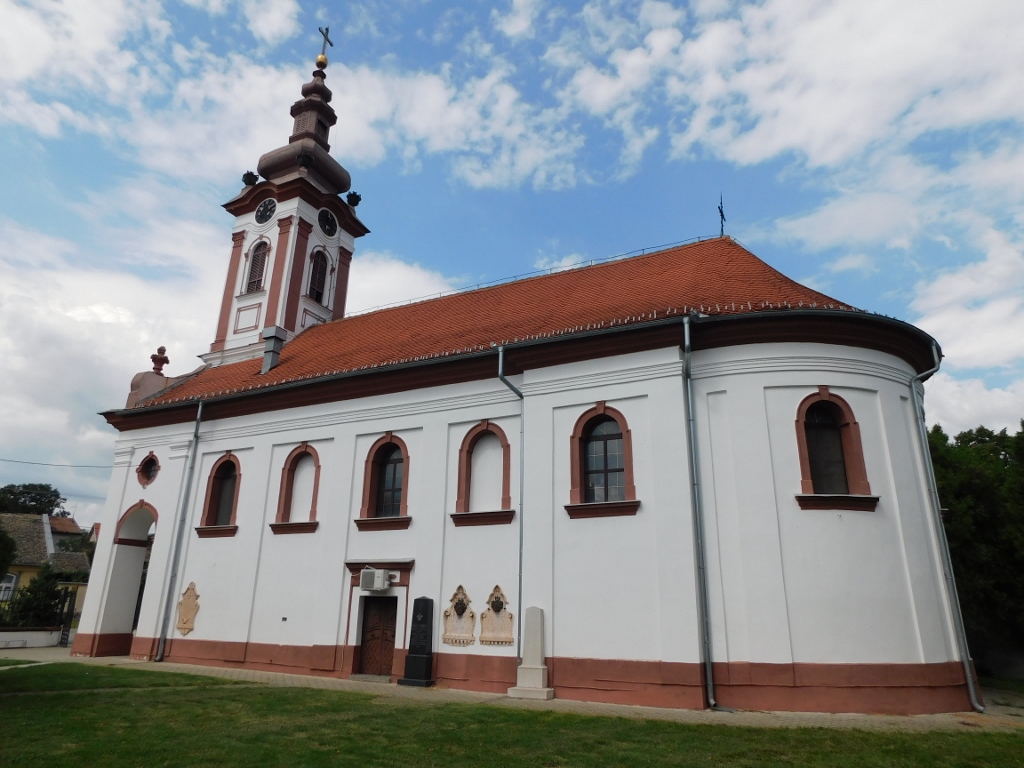 Serbian Orthodox Church of St. Archangels in Kovin
Serbian Orthodox Church of St. Archangels in Kovin
I partially consoled myself by taking a photo of a house located right across from the church. I really liked its facade.
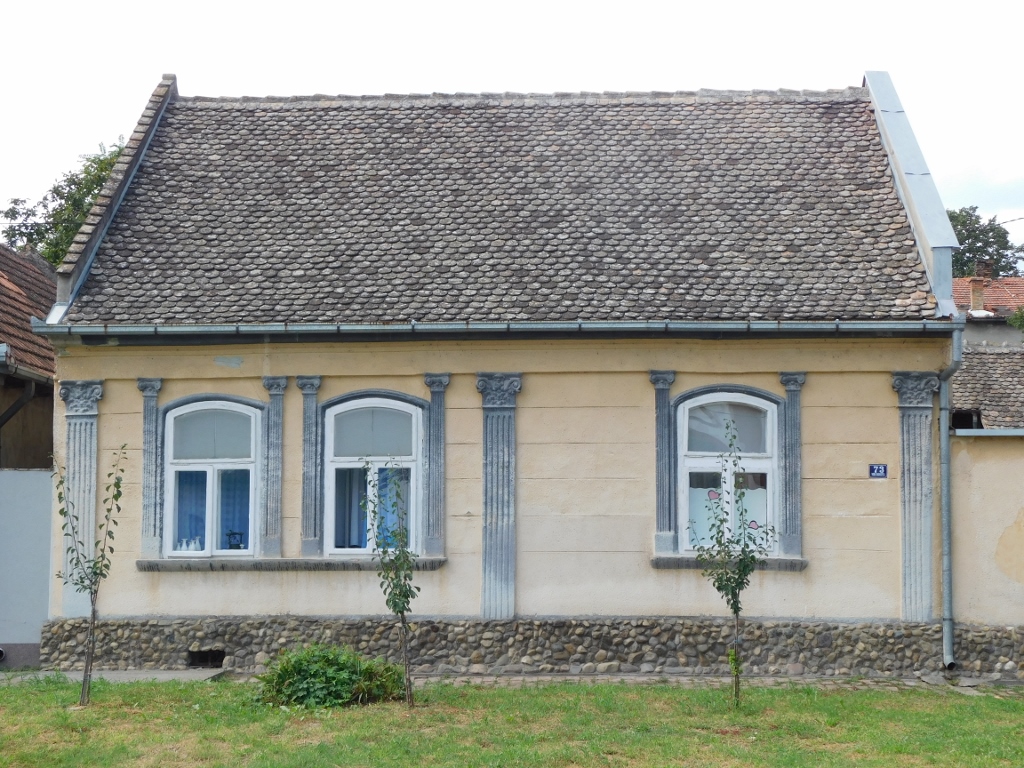 A detail from Kovin
A detail from Kovin
Now we drove to the centre of Kovin and parked our car there in order to explore a few more cultural monuments on foot. The first one we easily spotted is located in the middle of the city park that is a part of Trg oslobođenja (Liberation Square). It is the Roman Catholic Church of St. Teresa of Avila, built in 1830 on the site of the previous 18th-century church.
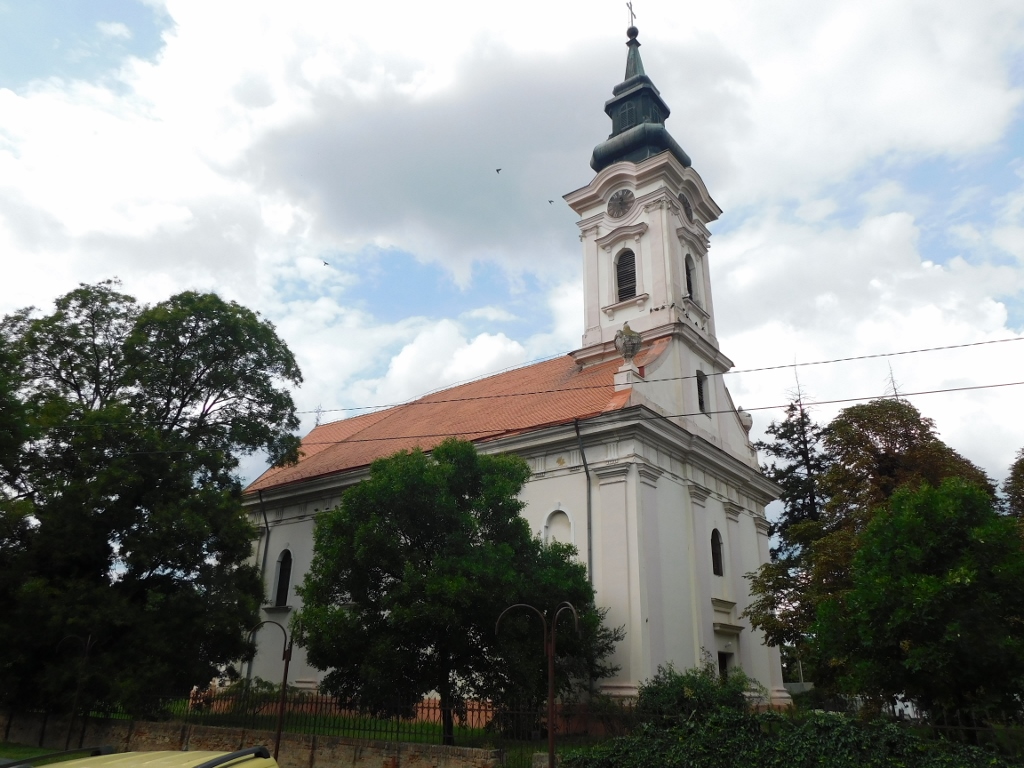 Roman Catholic Church of St. Theresa of Avila
Roman Catholic Church of St. Theresa of Avila
Unfortunately, this church was also closed during our visit, so Bilja and I just circled around it, specifically around the fence that surrounds the churchyard. Owing to the trees growing in the entire square, it’s not easy to see the entire church, but this circling allowed us to observe some details related to its architecture.
From the front, the eastern side, as seen in the previous photo, the church is adorned with a beautiful and harmonious tower, while two stone vases on top of the facade stand out. On the western side, you can clearly see the apse, as well as the decoration that includes shallow pilasters and a profiled cornice.
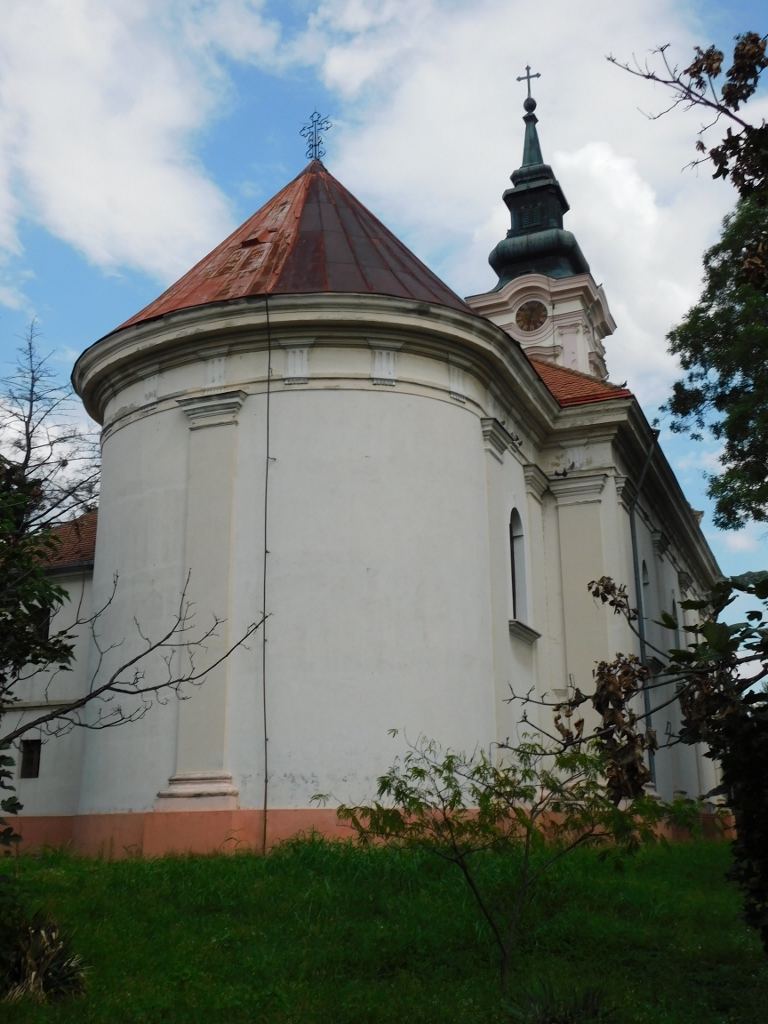 Roman Catholic Church of St. Theresa of Avila
Roman Catholic Church of St. Theresa of Avila
From here, we walked to another church that was also closed. We didn’t have much luck with churches on this day, but I’m still glad we came here. This is the Romanian Orthodox Church of the Holy Prophet Elijah, also a cultural monument.
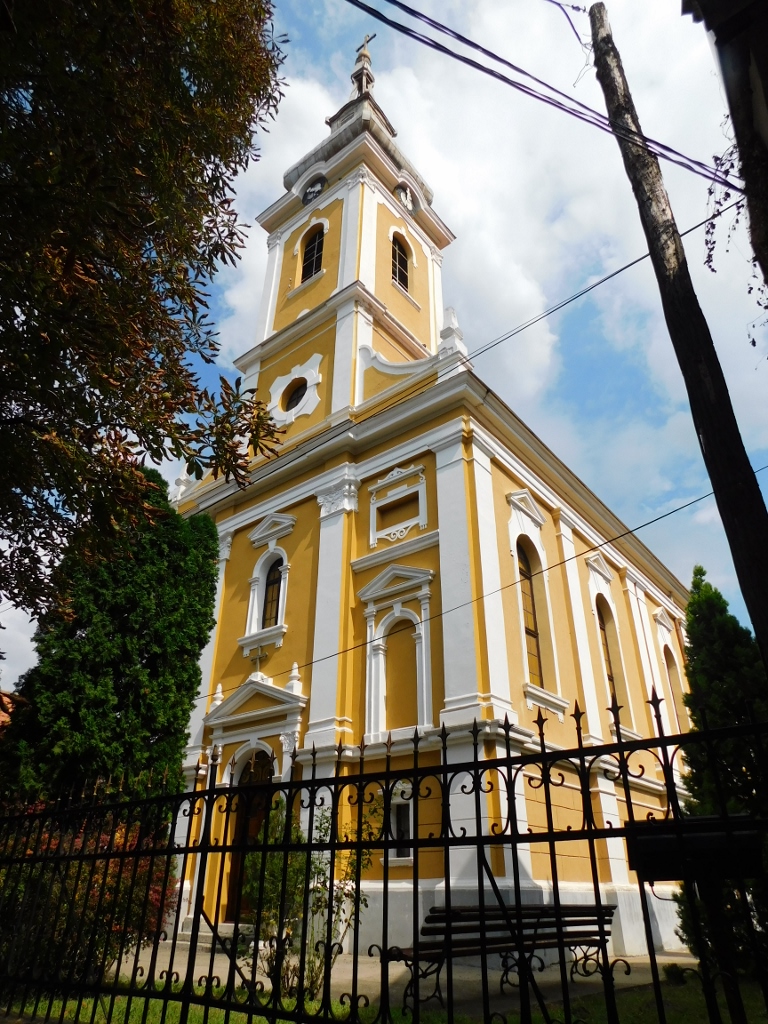 Romanian Orthodox Church of the Holy Prophet Elijah
Romanian Orthodox Church of the Holy Prophet Elijah
This church was built in 1906 and its most prominent feature is the tall bell tower rising from the main facade. The facade is richly decorated and the wall paintings, which we unfortunately didn’t see, date back to 1937/38.
Although these three churches I’ve just mentioned may seem very similar at first glance, almost the same, it is very important to note that they belong to different nations and different denominations. This is precisely what characterises the entire province of Vojvodina and therefore the Banat region as well – the great diversity of different nations whose members have practically lived together for centuries. This is the way to go, so, let them continue.
And as for our tour, this time, as I usually do, I also made an overly ambitious plan, which didn’t allow me to take a leisurely stroll through the town of Kovin and perhaps sit down, although I got an impression that this is a charming place. I think I’ll have to correct that on some future occasion. For now, we returned to the car and headed towards the Kovin Cemetery in the northern part of the city.
Along the way, I couldn’t resist stopping at one point to take a photo of one of the typical streets we passed through. This isn’t a scene from the very centre of this small town, but it nicely illustrates the urban harmony that characterises the place.
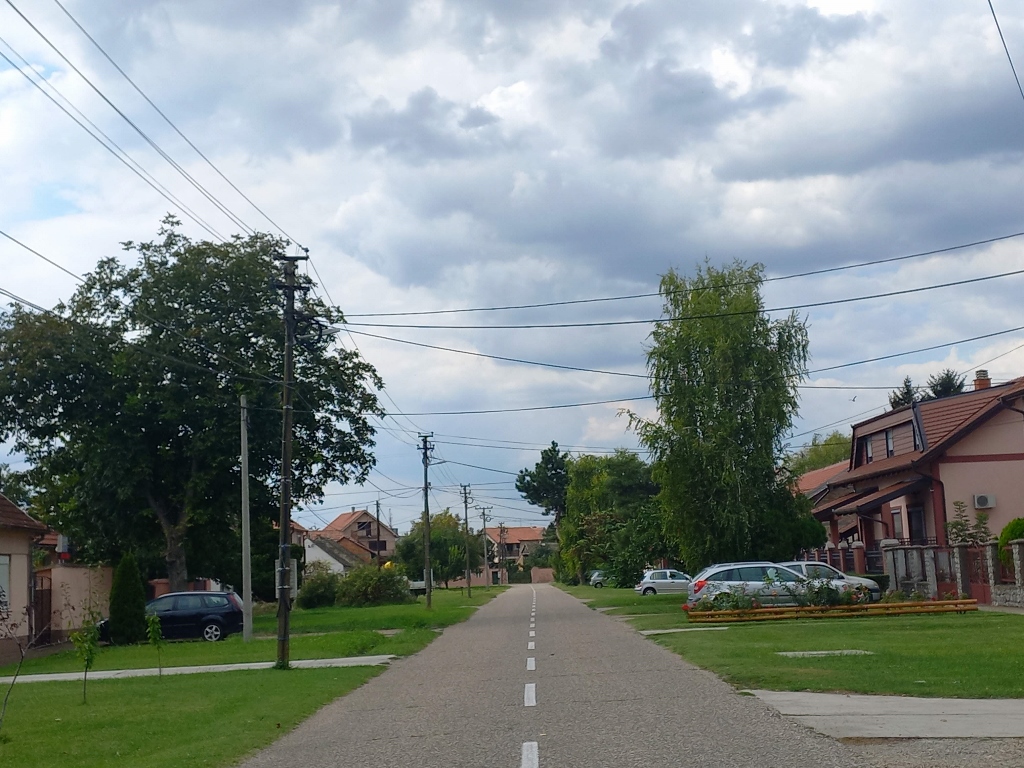 Kovin, a detail
Kovin, a detail
As for the cemetery, the reason we came here is that the Military Cemetery in Kovin, as a landmark, has the status of immovable cultural heritage.
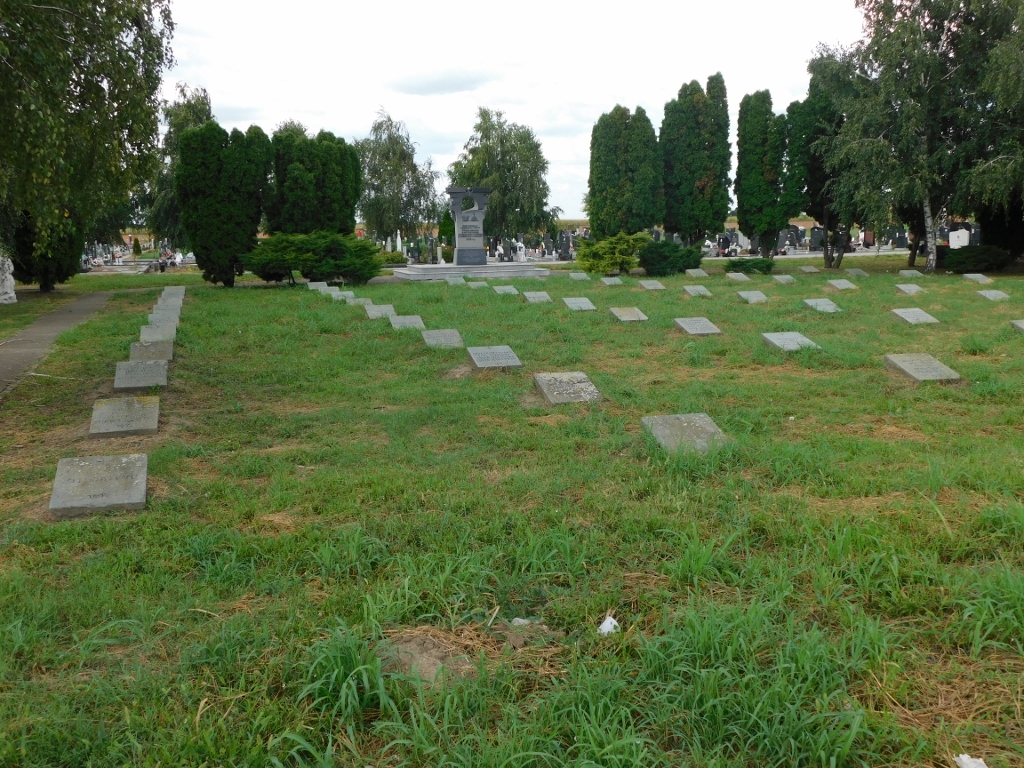 Military Cemetery in Kovin
Military Cemetery in Kovin
Namely, during World War I, there was an Austrian Red Cross hospital in Kovin. In October 1915, the Battle for Smederevo (on the other side of the Danube) took place and wounded soldiers from both armies were treated at this hospital. Those who did not survive were buried in the Kovin Cemetery, which included 307 Serbian soldiers, 178 German and Austro-Hungarian soldiers, and several unidentified individuals. In 2009, a granite monument was erected at the military cemetery with an inscription that reads: “Here rest united in death Serbian, German and Austro-Hungarian warriors who fell in battles for Smederevo and its surroundings in 1915.” The inscription is also done in German and Hungarian.
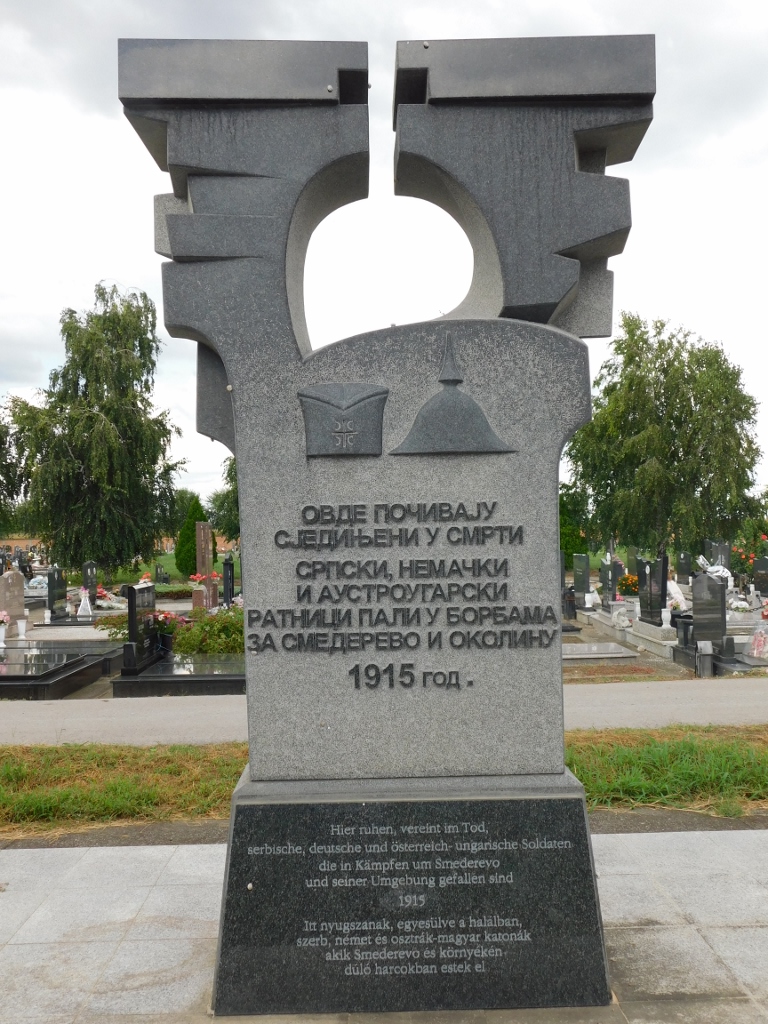 Military Cemetery in Kovin
Military Cemetery in Kovin
After visiting the cemetery, Bilja and I went to have lunch at a restaurant that may not have had a polished interior decoration, but the food was good. It was clear that the high ratings on the internet that the restaurant had received were more about the food than the decor. We both had a very simple but delicious Wiener Schnitzel.
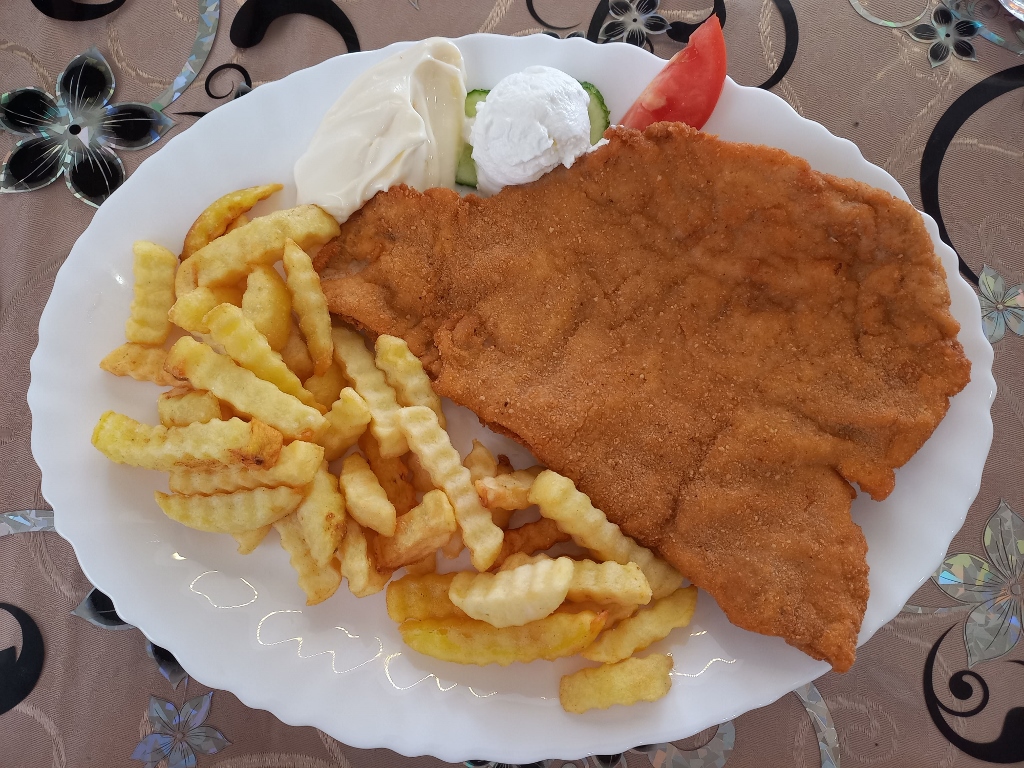 Lunch in Kovin
Lunch in Kovin
When we finished with our lunch, my friend Bilja and I drove to the nearby village of Deliblato, after which the nearby sands got their name. The sands are a part of the Special Nature Reserve “Deliblatska Peščara” which is a great place for a walk, as I did a few years ago and I would gladly like to do it again. I definitely plan to do that, but at another time. This time, the two of us only went to Deliblato settlement because another Special Nature Reserve, “Kraljevac,” is located within it, along with a couple of cultural monuments.
However, we first stopped at the Romanian Orthodox Church of the Holy Trinity because it truly looked impressive.
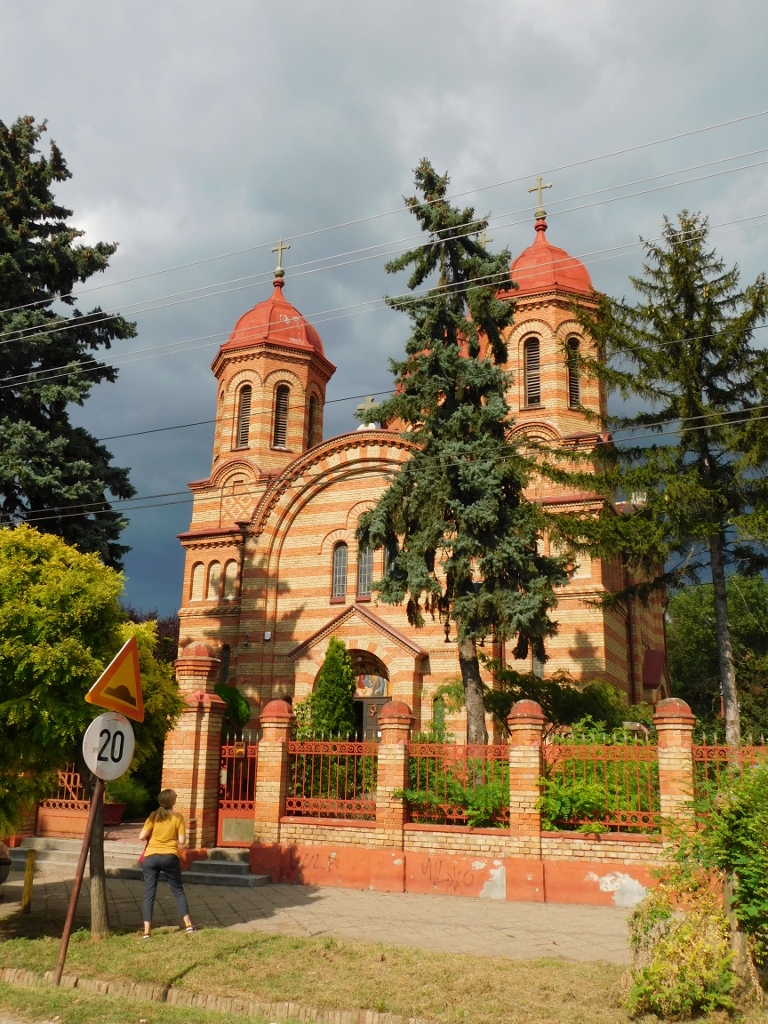 Romanian Orthodox Church of the Holy Trinity
Romanian Orthodox Church of the Holy Trinity
Here, we were fortunate that some work was being done in the church, so it happened to be open, allowing us to enter and see its interior. The church was built in 1927 and is considered one of the most beautiful Romanian Orthodox churches in southern Banat region.
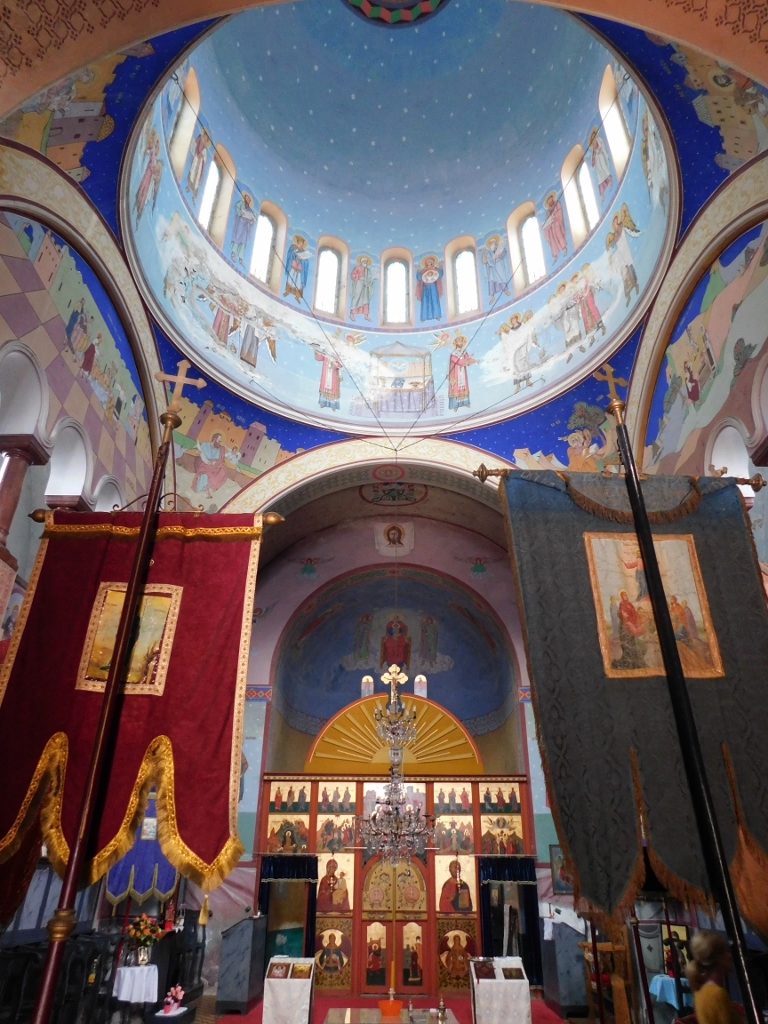 Romanian Orthodox Church of the Holy Trinity, the interior
Romanian Orthodox Church of the Holy Trinity, the interior
The interior decoration of the church makes it unique since it features paintings of both the Romanian and Serbian patriarchs from the time of the church’s construction, illustrating the cultural and historical closeness of the Romanian and Serbian people in southern Banat. However, perhaps even more interesting from a contemporary pop culture perspective is that one of the portraits in the church depicts Vlad the Impaler, better known as Count Dracula! In the next photo, that portrait can be seen in the roundel on the far right.
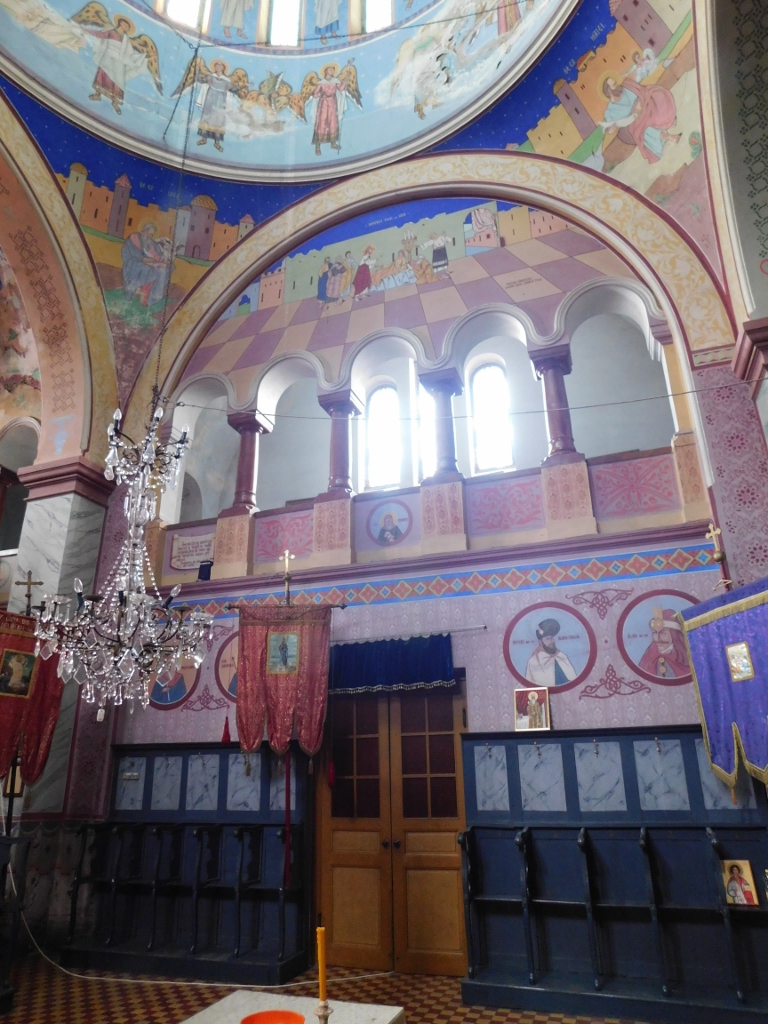 Romanian Orthodox Church of the Holy Trinity, the interior
Romanian Orthodox Church of the Holy Trinity, the interior
A bit further from this church there is the Serbian Orthodox Church of the Translation of the Relics of St. Nicholas, categorised as a cultural monument of great importance. At first glance, it seemed like the gate leading to the courtyard was locked, but it turned out that we could enter and approach the church.
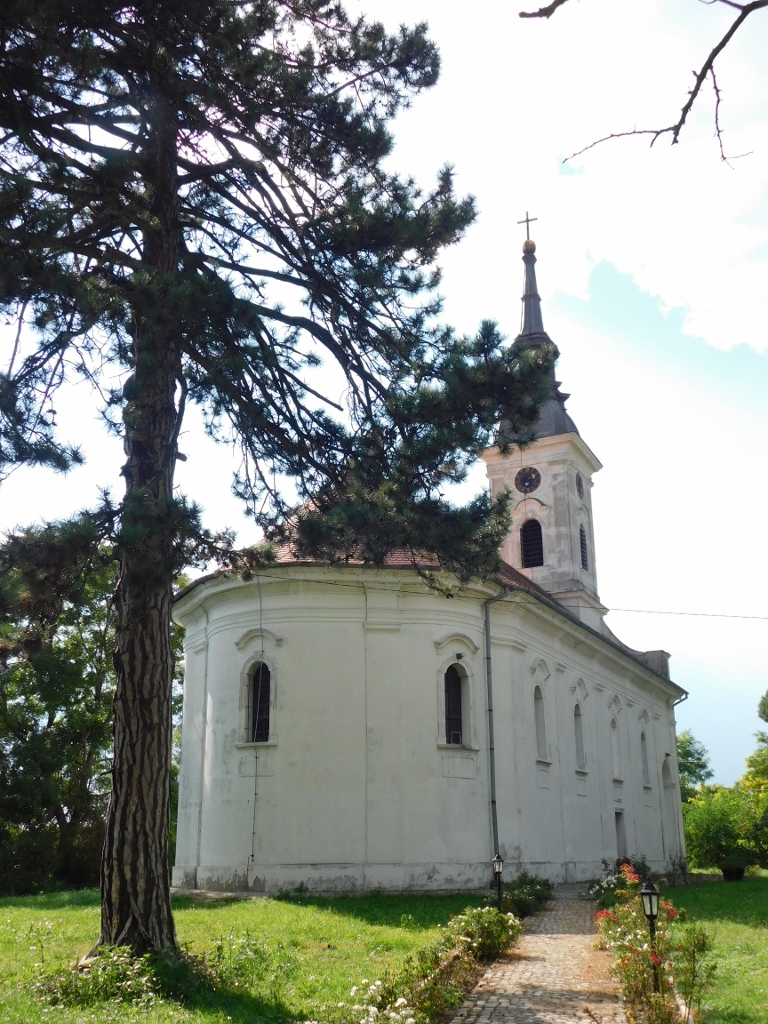 Church of the Translation of the Relics of St. Nicholas in Deliblato
Church of the Translation of the Relics of St. Nicholas in Deliblato
The church was built in the second half of the 18th century and inside there is an iconostasis from 1778 painted by Jakov Orfelin (1750-1803), a renowned Serbian baroque painter. Although, judging by the description, the church houses very beautiful icons that make it highly significant, it was closed during our visit, so Bilja and I could only walk around it.
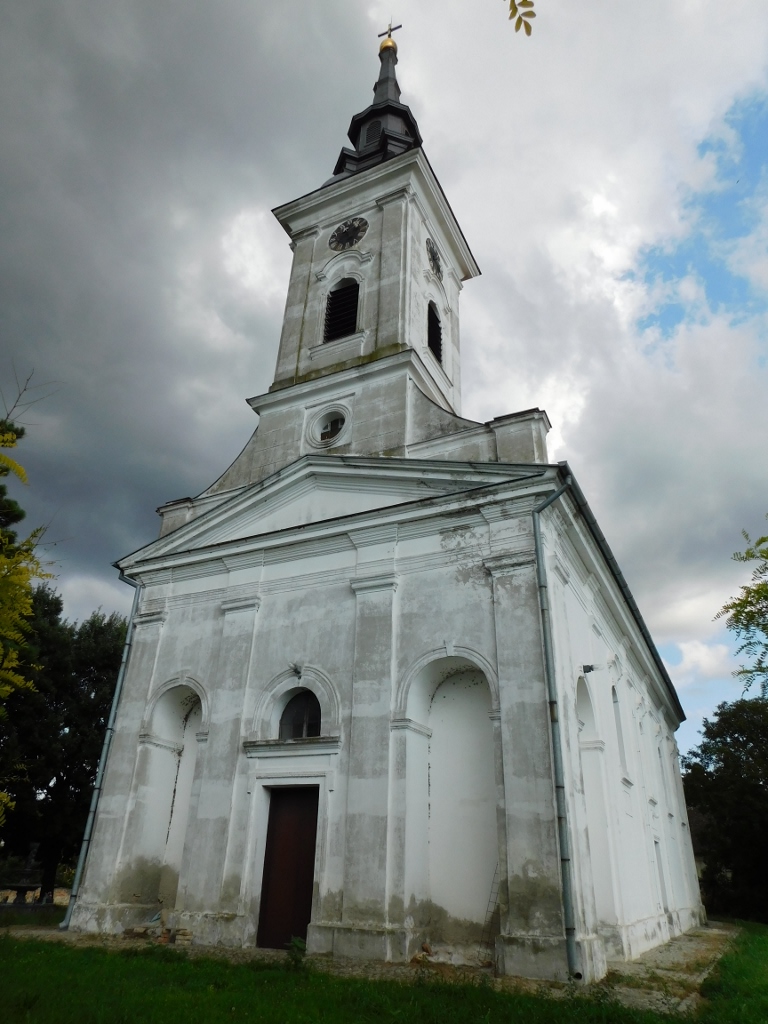 Church of the Translation of the Relics of St. Nicholas in Deliblato
Church of the Translation of the Relics of St. Nicholas in Deliblato
On the other hand, in the churchyard, there are three tombstones from the 18th century, which are also designated as cultural monuments. The description I had regarding these tombstones didn’t quite match the actual spatial layout and in the end, I couldn’t locate the most important one among them – the grave of Anđelija Maksimova, a daughter of the local priest, who held the title of village chief, which was quite progressive for the late 18th century. However, I did manage to capture the tomb of her parents from 1783.
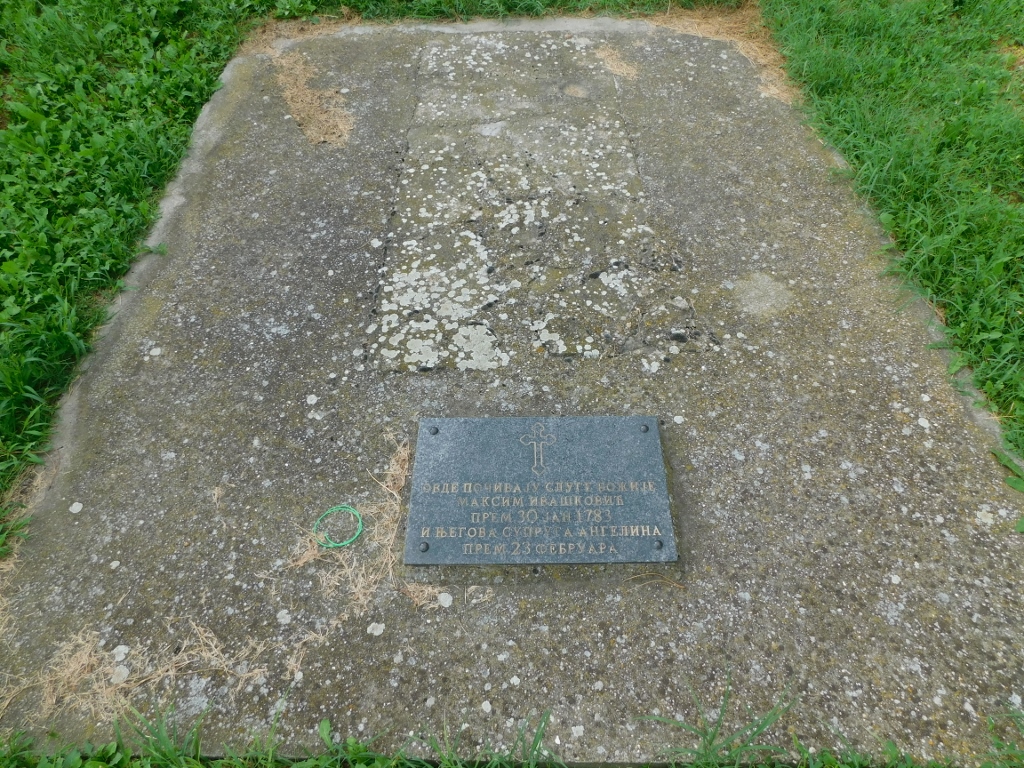 Tombstone from the 18th century enwrapped by contemporary concrete and with a contemporary plaque
Tombstone from the 18th century enwrapped by contemporary concrete and with a contemporary plaque
Along the southern wall of the church, there are three grave slabs and I believe that’s what confused me the most here.
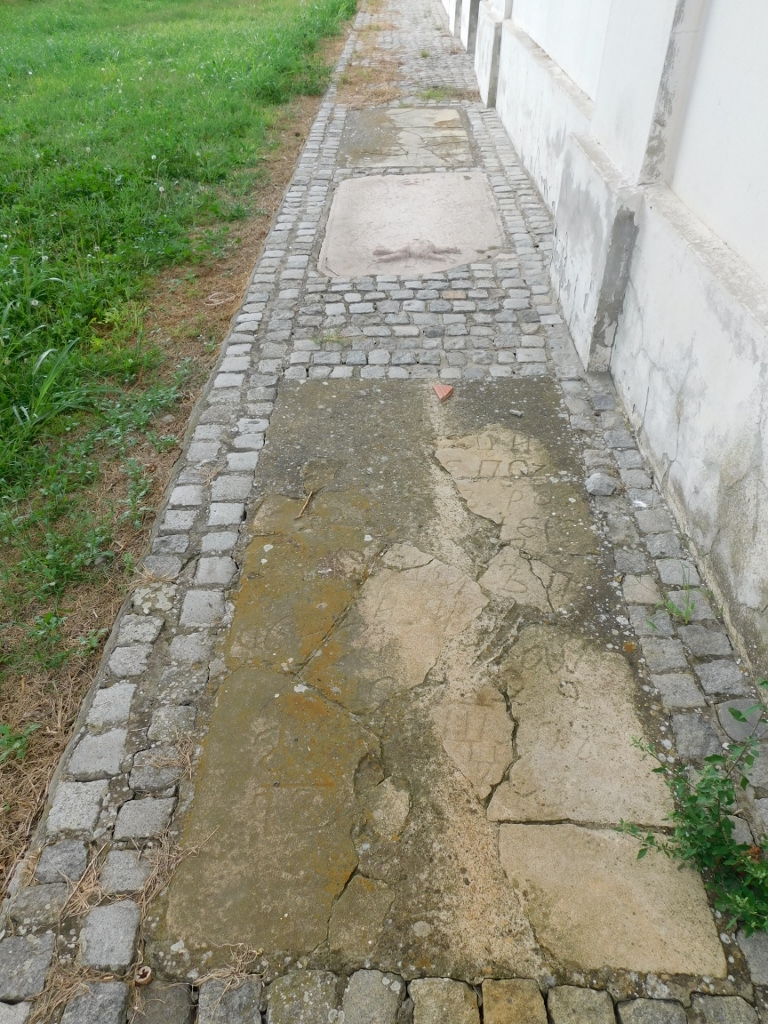 Grave slabs beside the Church of the Translation of the Relics of St. Nicholas in Deliblato
Grave slabs beside the Church of the Translation of the Relics of St. Nicholas in Deliblato
When we first arrived in Deliblato, clouds had already appeared in the sky, suggesting rain. At one point, it even started to drizzle, but it was very brief. On the other hand, the effects with the afternoon sun were very beautiful, like this one I captured in the courtyard of the Church of the Translation of the Relics of St. Nicholas.
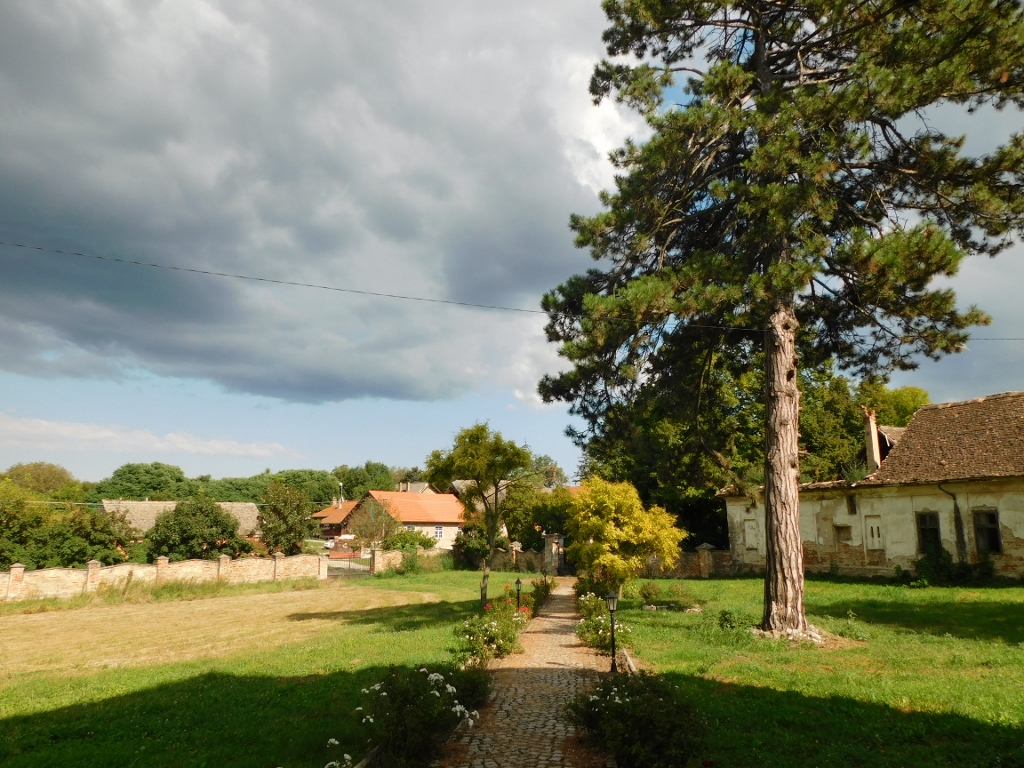 Courtyard of the Church of the Translation of the Relics of St. Nicholas in Deliblato
Courtyard of the Church of the Translation of the Relics of St. Nicholas in Deliblato
As I’ve mentioned, Deliblato is also home to the Special Nature Reserve “Kraljevac,” so we went to the lake itself, after which the reserve has been named.
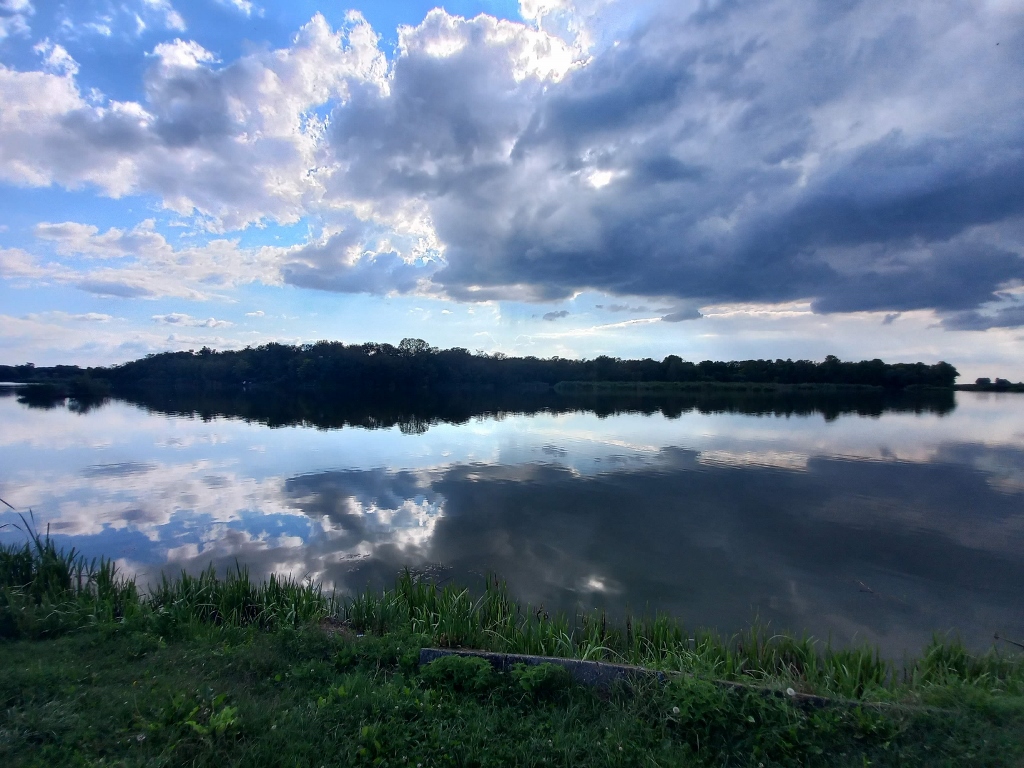 Lake and the Special Nature Reserve “Kraljevac”
Lake and the Special Nature Reserve “Kraljevac”
The reserve is known for its richness and diversity of wildlife and plant life, with floating islands adding a special charm. Under the influence of the wind, the floating islands move, thus consequently changing the landscape constantly. These floating islands are remnants of lowland peat bogs. Visitors can also take short boat trips to explore the area, but my fundamental mistake was not considering that it was September and a weekday, meaning there were practically no visitors. Due to this oversight, I didn’t inquire or make any reservations, so Bilja and I could only take a stroll along the lake.
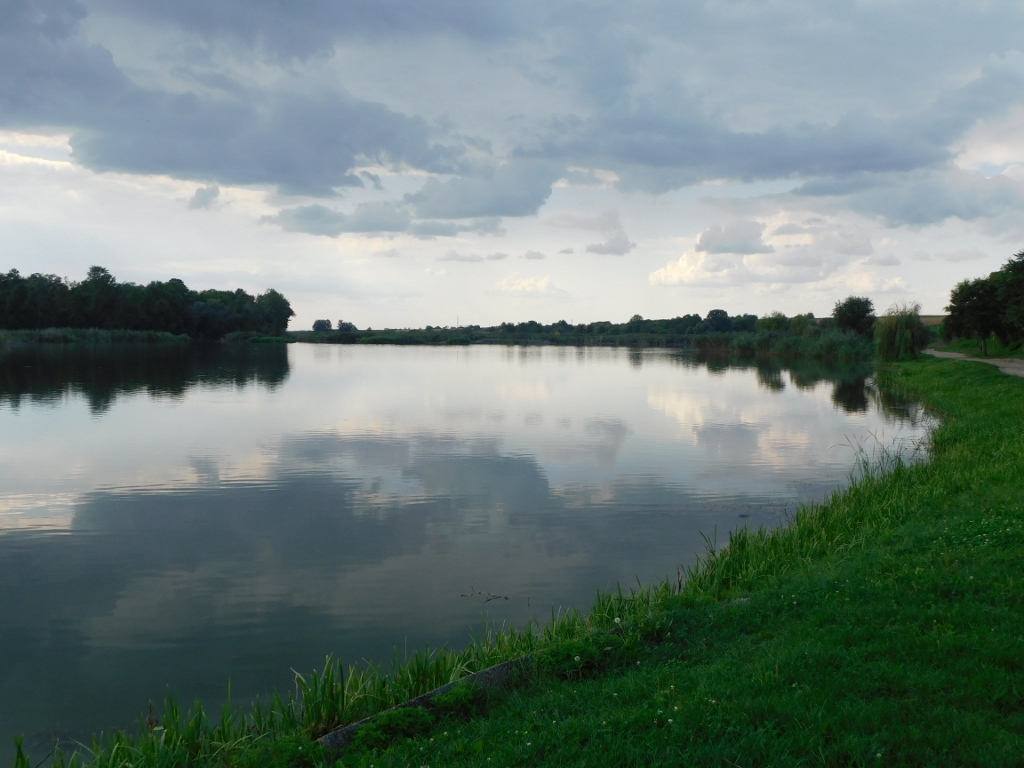 Lake and the Special Nature Reserve “Kraljevac”
Lake and the Special Nature Reserve “Kraljevac”
However, we faced a problem very quickly. We encountered a group of local (stray) dogs that first fiercely barked at a cat, which wisely fled up a tree. After their initial action, the dogs decided to lie down in the middle of the walking path, while the cat was safely perched up on the tree. However, carried away by the success of their barking, the dogs got up and started moving towards us with a new round of barking. I do like dogs, but I must admit that I don’t feel very comfortable when several of them approach me intensely barking. We don’t know each other, so I don’t know how far they’re willing to go.
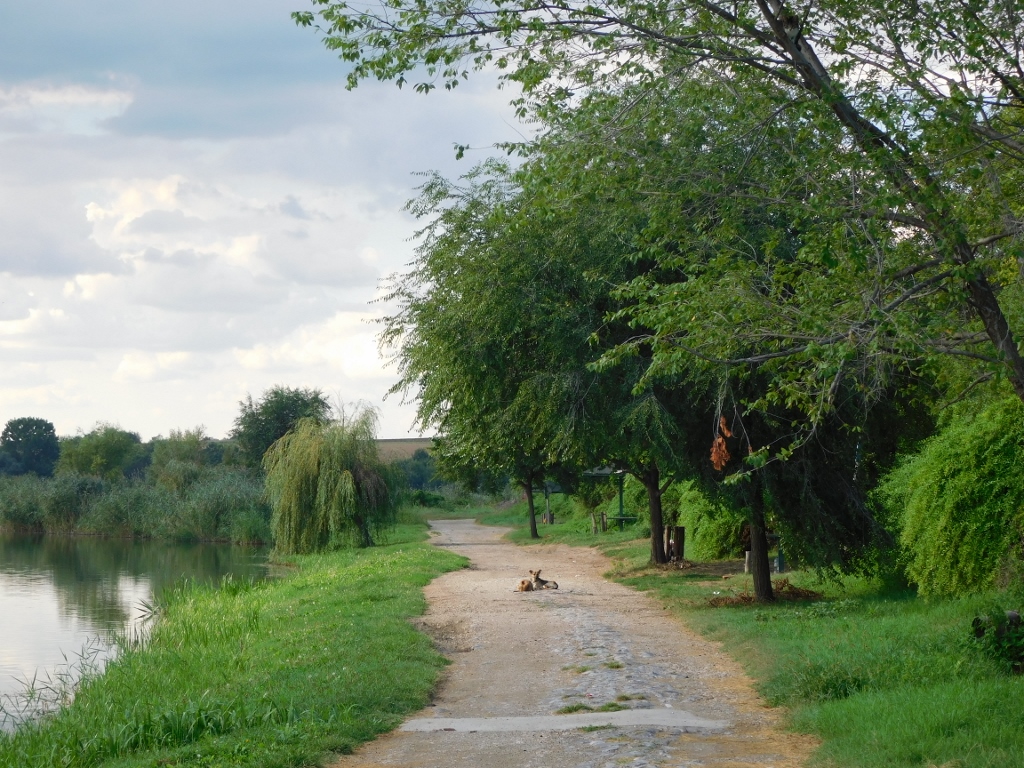 Situation in the Special Nature Reserve “Kraljevac”
Situation in the Special Nature Reserve “Kraljevac”
Followed by the dogs, who were barking incessantly around us, we even got to the tree and I took a photo of the cat. However, in the end, Bilja and I decided to return to the car since the dogs weren’t leaving us alone at all.
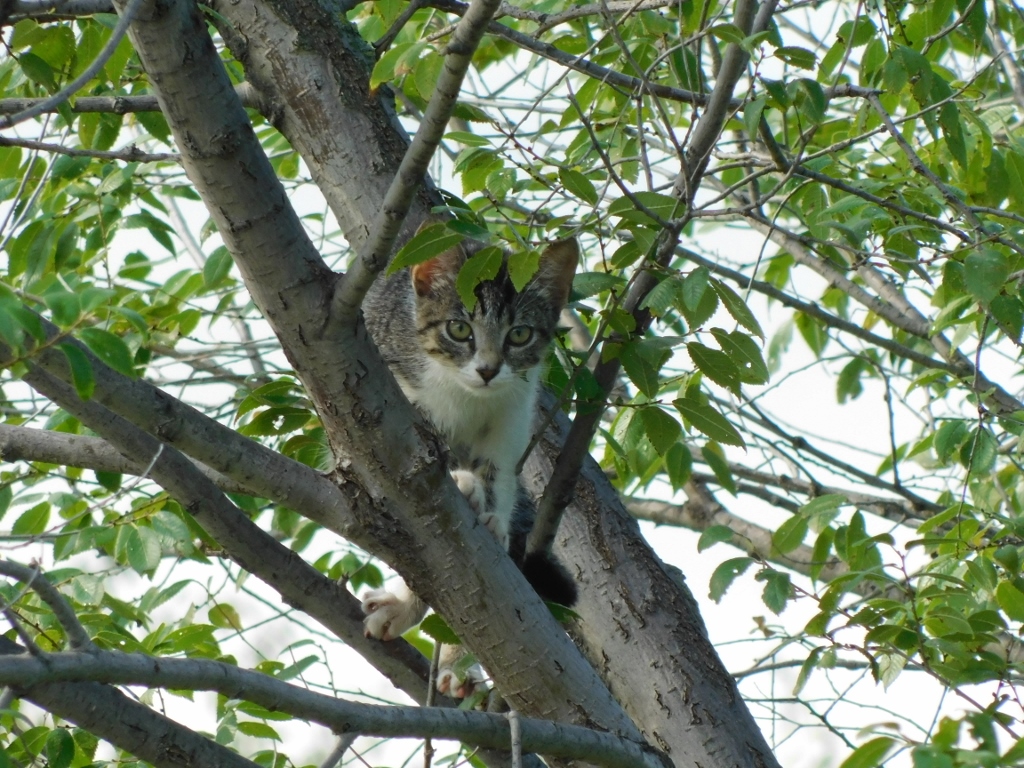 Situation in the Special Nature Reserve “Kraljevac”
Situation in the Special Nature Reserve “Kraljevac”
Once we left their “territory,” the dogs gave up on us and went back to check if the cat was still in the tree, while I noticed and took a photo of a snake in the lake.
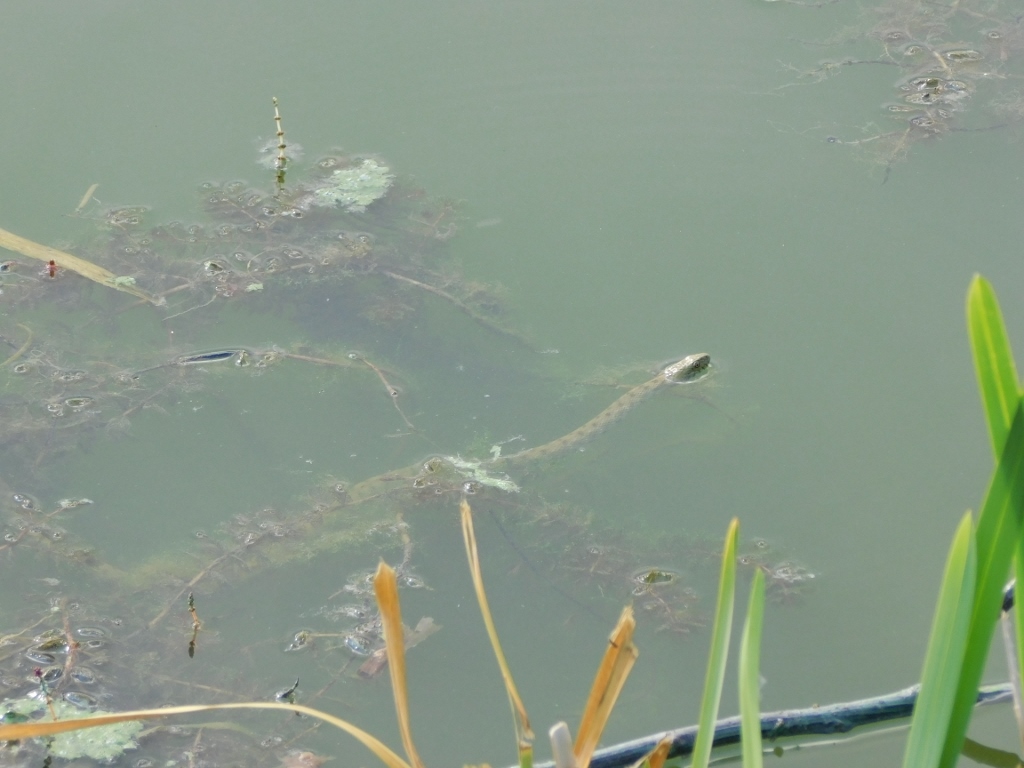 Snake in Kraljevac Lake
Snake in Kraljevac Lake
Next, we moved to a local household that is involved in hospitality and catering, and there we had coffee and a nice conversation with the host. My conclusion was that it was good to come here, but with prior notice. Then everything can be easily organised. The owner of this guesthouse also has his own pier and, as far as I understood, he can organise boat trips to the floating islands if needed.
 Lake and the Special Nature Reserve “Kraljevac”
Lake and the Special Nature Reserve “Kraljevac”
After we had finished with our coffee and headed towards the car, I noticed a beautiful butterfly enjoying the flower garden of this household.
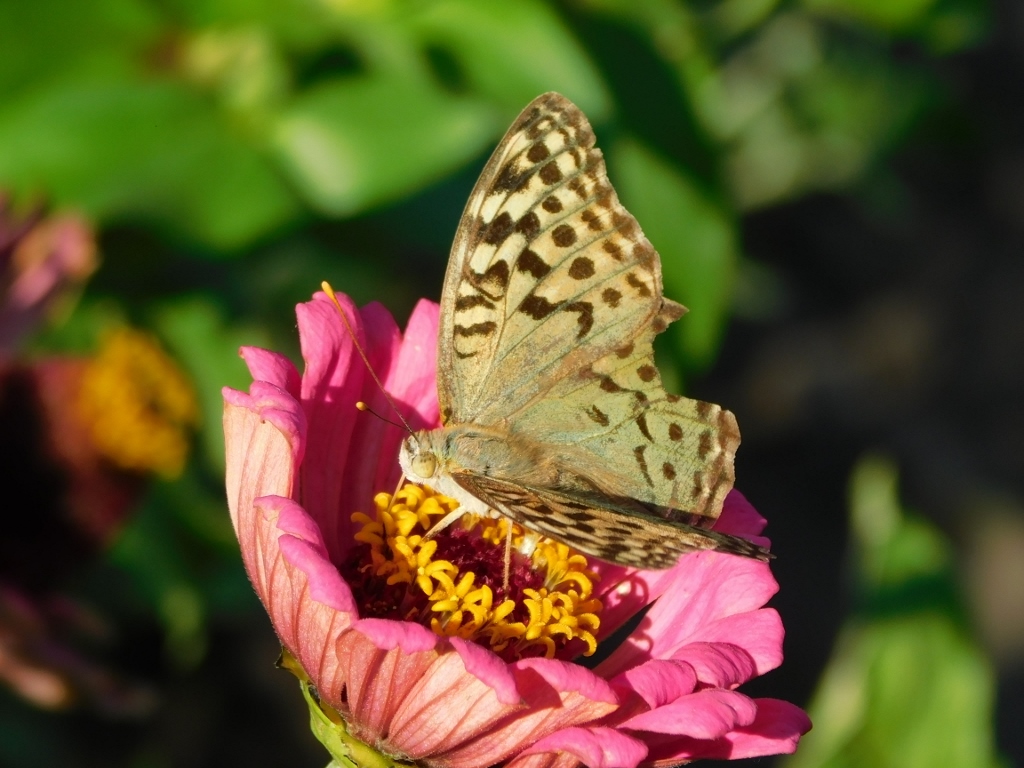 A detail from Deliblato
A detail from Deliblato
The only thing left for Bilja and I to do on this day was to go to the village of Dolovo, located in the municipality of Pančevo. The sky had cleared up again and we almost didn’t encounter anyone on the road.
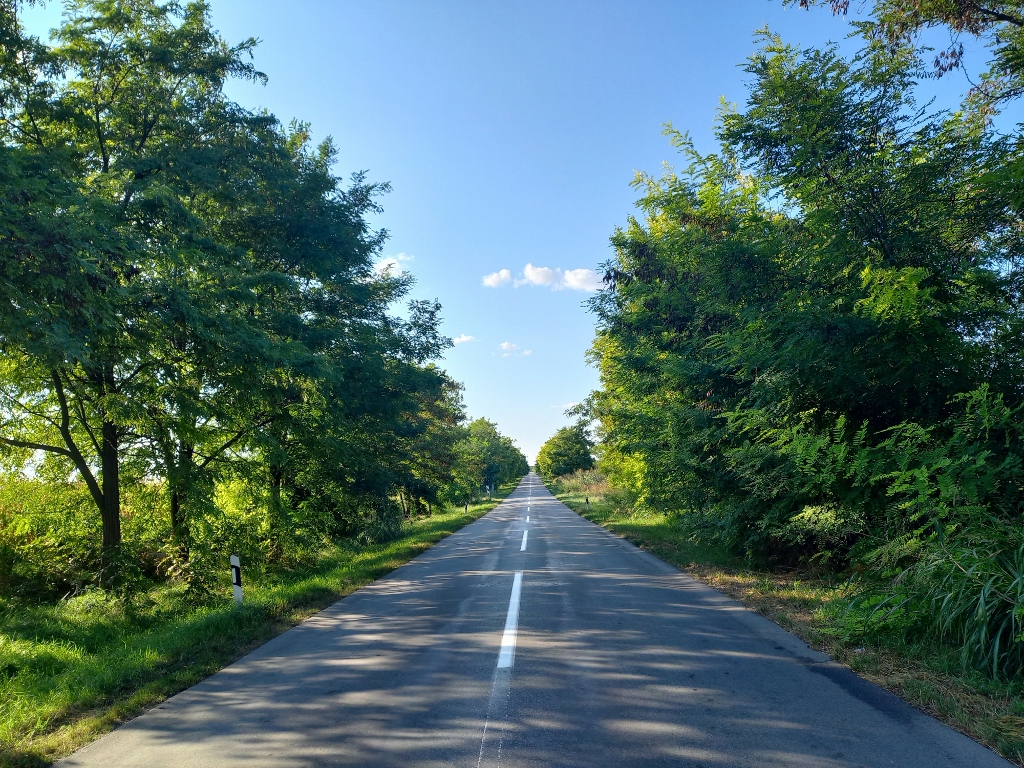 On the way from Deliblato to Dolovo
On the way from Deliblato to Dolovo
I have the impression that Dolovo is not well-known enough, yet it is an exceptionally charming place with several important cultural monuments. After parking our car in the village centre, we took a short walk that led us past a quite impressive building. It is marked as Dolovac Castle on Google Maps, but I couldn’t find any information about the building itself, nor did I find anything on the internet about the alleged “Dolovac Castle.”
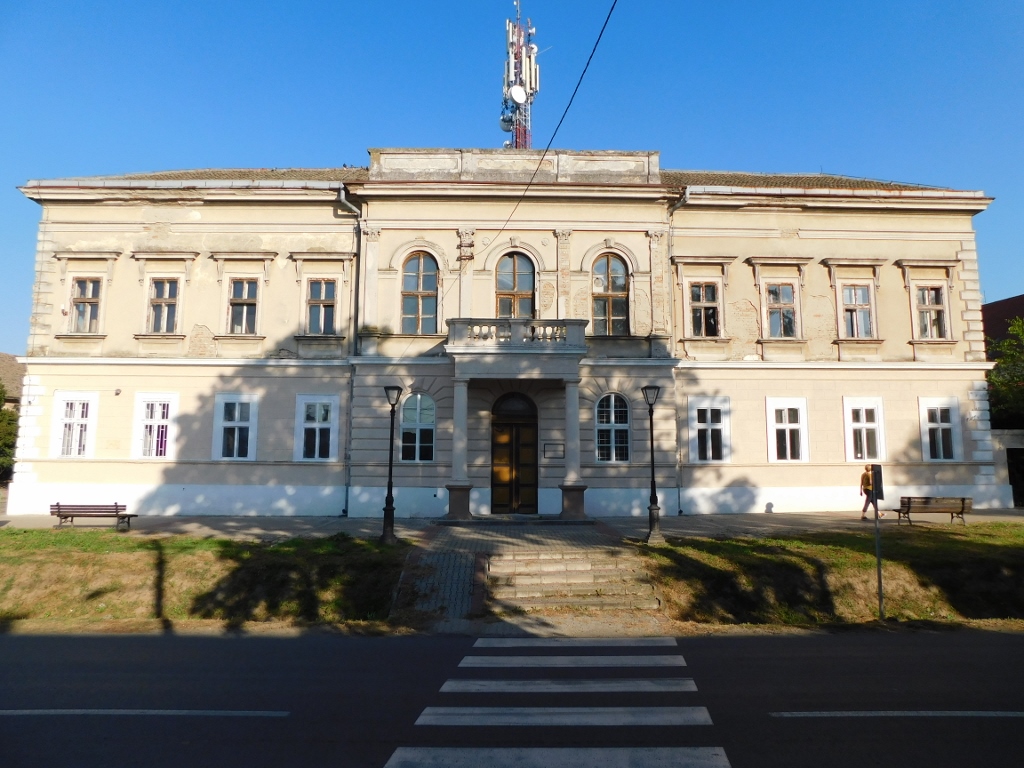 Impressive building in the centre of Dolovo
Impressive building in the centre of Dolovo
Right next to this building is the courtyard with the Church of the Translation of the Relics of St. Nicholas “Velika-Donja” (Big-Lower) which is a cultural monument of great importance.
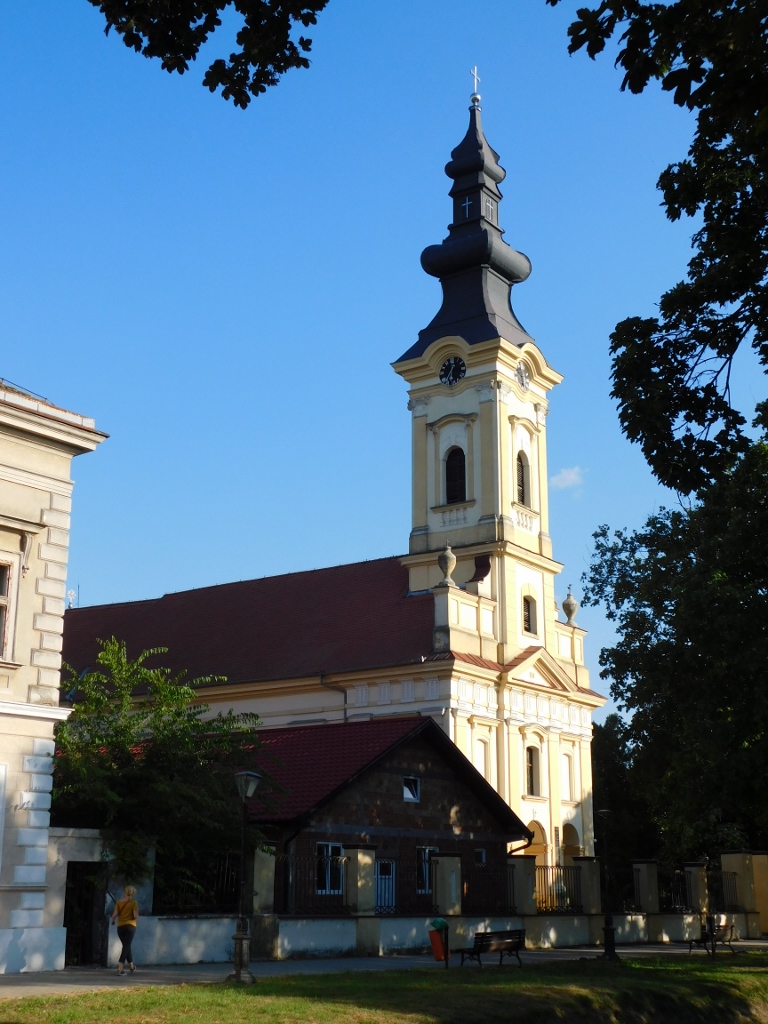 Church of the Translation of the Relics of St. Nicholas “Velika-Donja”
Church of the Translation of the Relics of St. Nicholas “Velika-Donja”
The church dates back to 1811 and the icons within the iconostasis are from the first half of the 19th century. Part of me hoped that this church might be open because it was later in the afternoon, so I thought we might be able to enter because of the evening service, but once again, we found the doors closed. I realised that in the future, I’ll have to call ahead and check whether churches are open or announce my visit. It’s just a shame to come here and miss half of the important things. For instance, the painted decoration done by Jovan Popović in this church in 1850 is considered one of the most beautiful religious ensembles from the mid-19th century.
What I could see was the tall bell tower and the rich decoration on the western facade of the church.
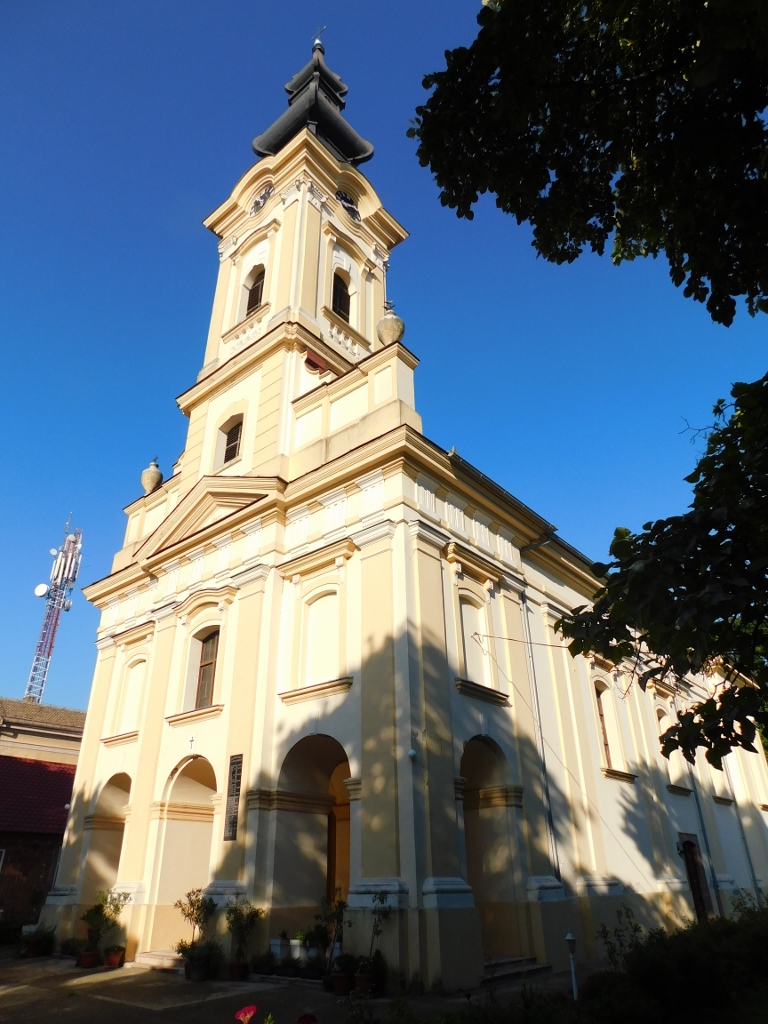 Church of the Translation of the Relics of St. Nicholas “Velika-Donja”
Church of the Translation of the Relics of St. Nicholas “Velika-Donja”
The next building on the same side of the street is from 1902 and currently houses the premises of the local community and the post office. The building is very beautiful, especially illuminated by the afternoon sun.
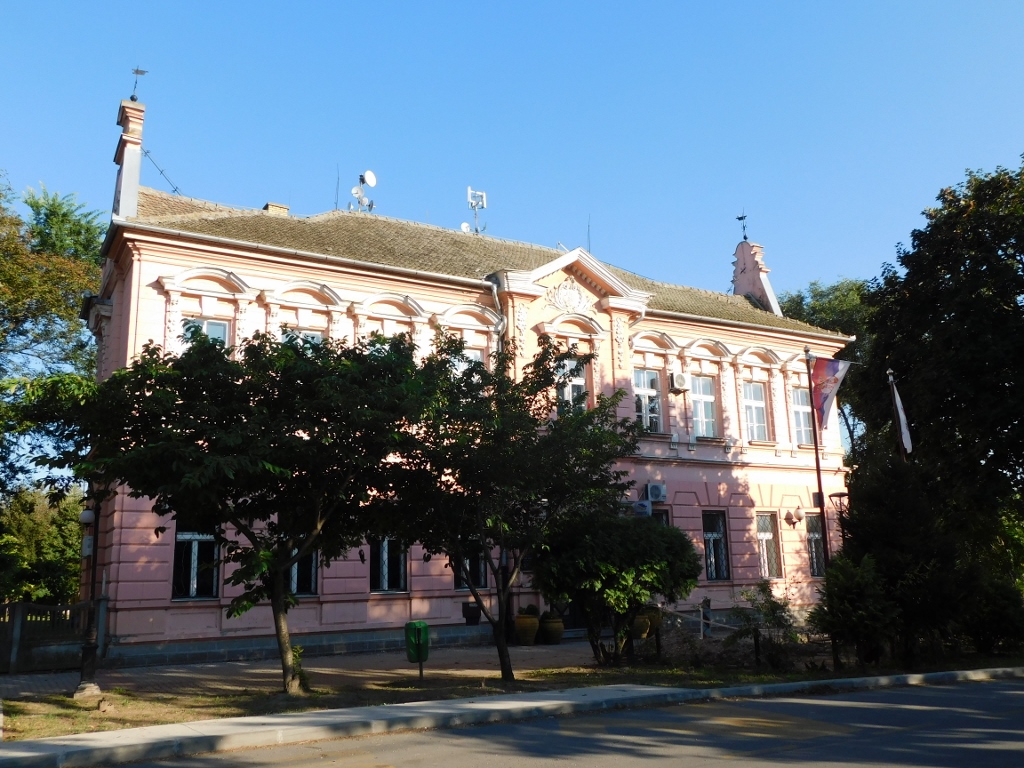 Building in Dolovo that houses the local community’s premises and the post office
Building in Dolovo that houses the local community’s premises and the post office
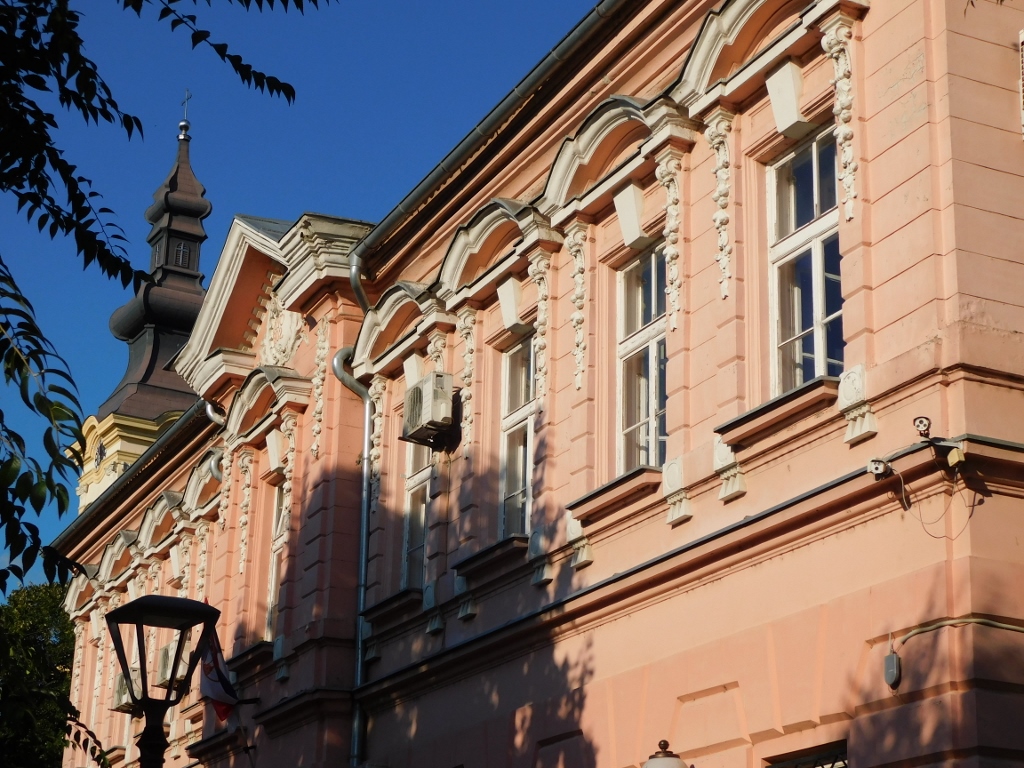 Building in Dolovo that houses the local community’s premises and the post office
Building in Dolovo that houses the local community’s premises and the post office
From here, we went to the nearby Pobede Street, where at number 20, there is another cultural monument, the Banat Curtilage in Dolovo. Oh yes, it was also closed. In addition, due to the vegetation growing in front of the house, its facade can no longer be well observed from the front, but I managed to capture it from a certain angle.
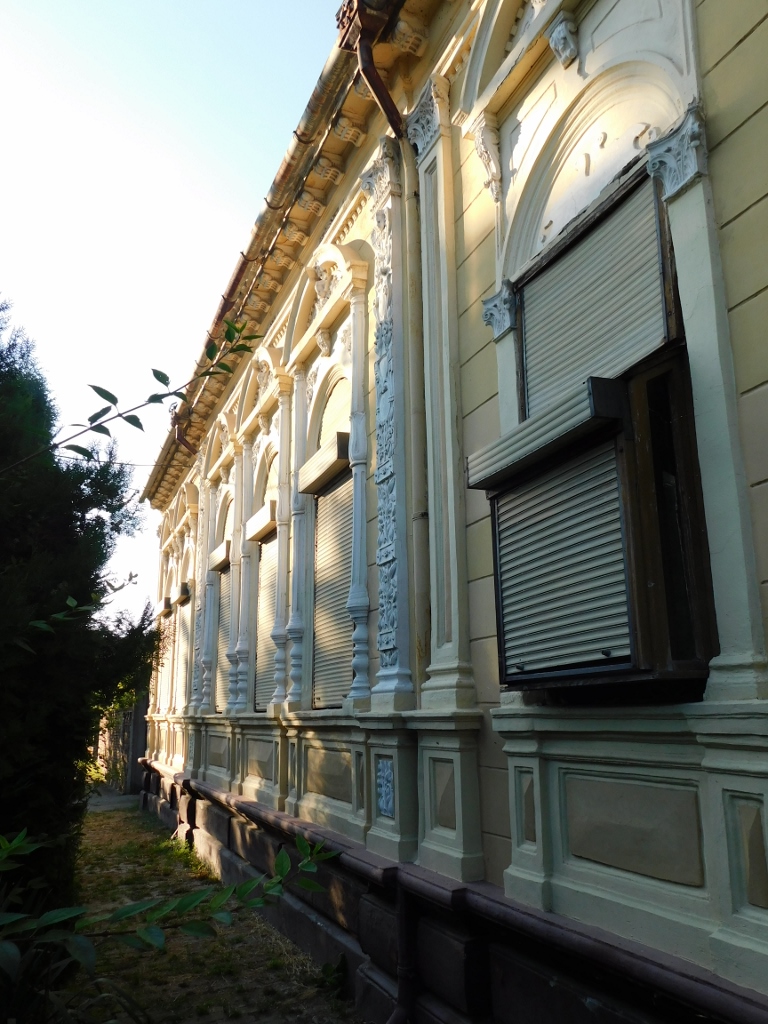 Banat Curtilage in Dolovo
Banat Curtilage in Dolovo
Here, it’s not just about the house facing the street with a truly beautiful facade, but also about the entire curtilage dating back to the first half of the 19th century, representing a typical example for southern Banat. The plot is divided into the main courtyard, agricultural courtyard and garden. Regarding the buildings, there are the old house, new house, wine cellar, barn, granary, horse stable and other auxiliary buildings. The old house is believed to have been built in the 18th century, while the house facing the street, visible in the previous photo, dates back to 1903.
The walk along Pobede Street was not in vain. Although I believe similar sights can be seen in other parts of Dolovo, it was very interesting for me to take photos of various details related to the houses in this area.
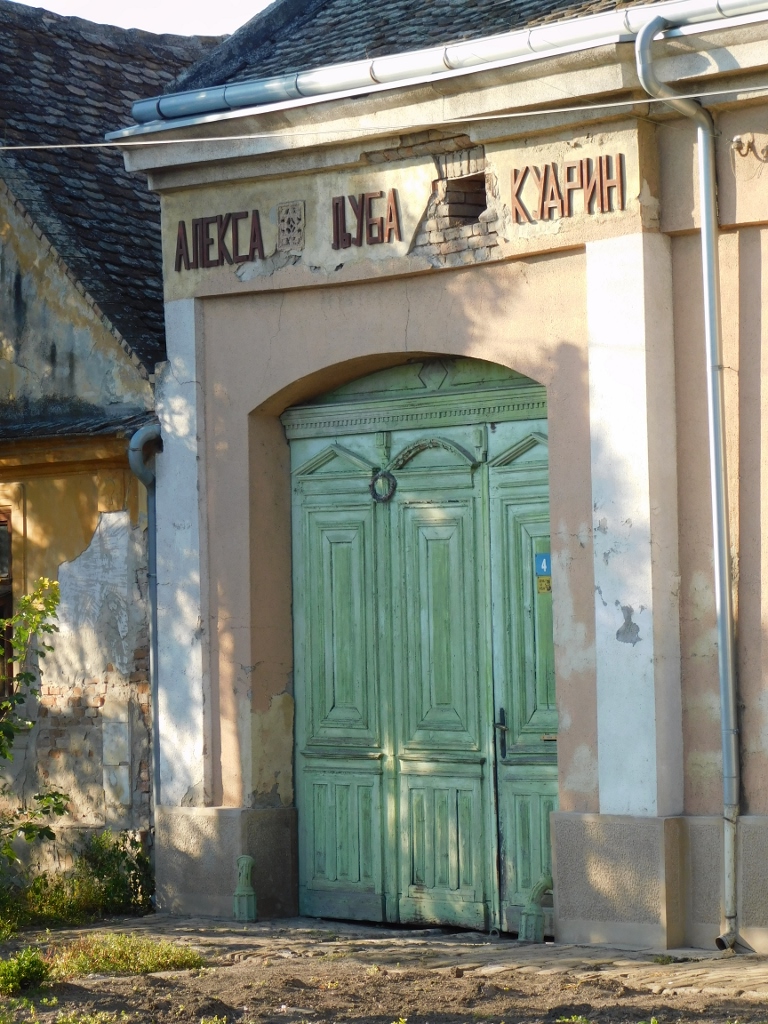 Dolovo, a detail
Dolovo, a detail
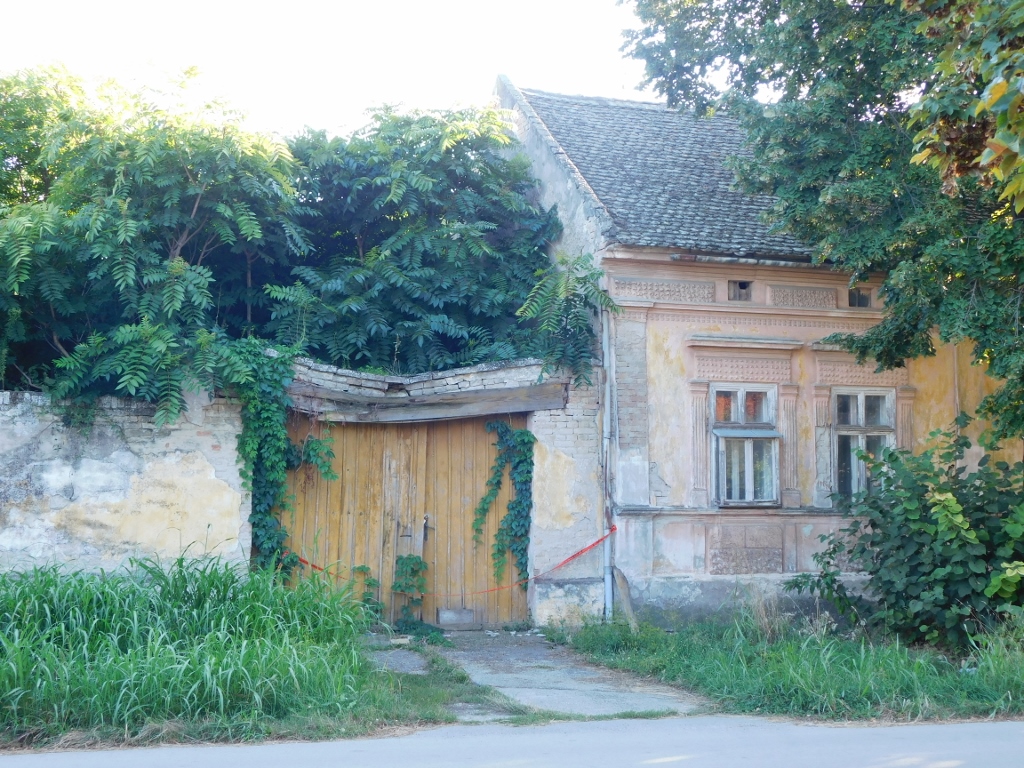 Dolovo, a detail
Dolovo, a detail
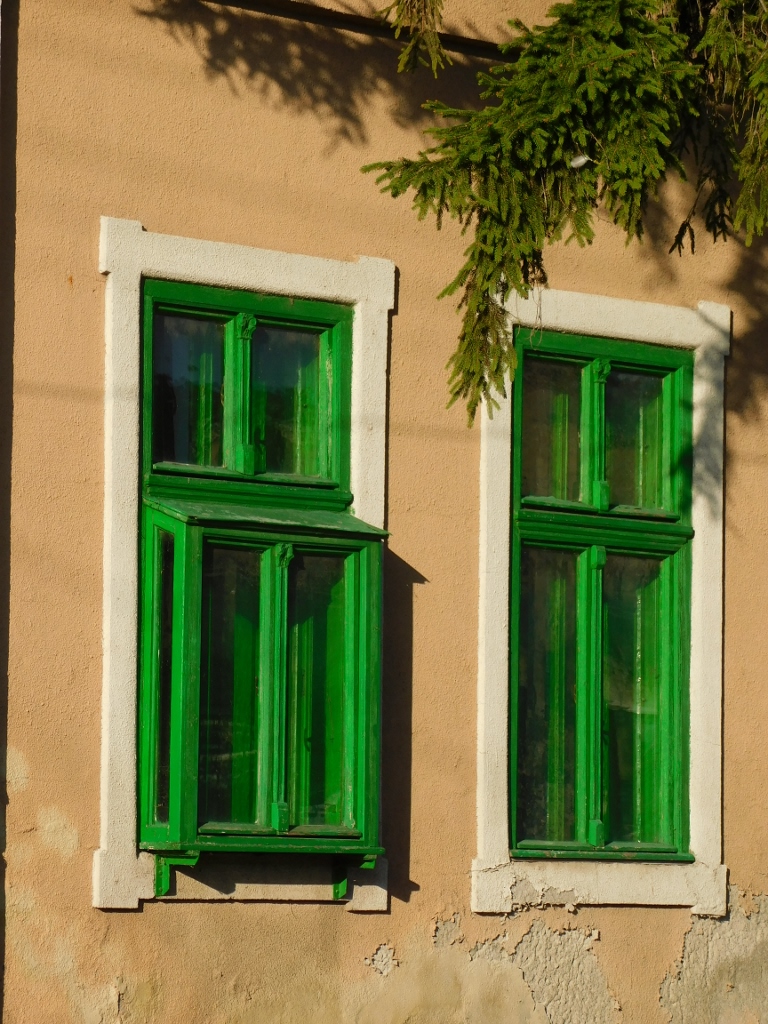 Dolovo, a detail
Dolovo, a detail
After that, Bilja and I walked to another church that is a cultural monument of great importance. It is the Church of the Translation of the Relics of St. Nicholas “Mala-Gornja” (Small-Upper). Although this church is located on a different elevation compared to the Church of the Translation of the Relics of St. Nicholas “Velika-Donja,” with the Dolovo valley in-between, it’s not entirely clear to me why one of the two churches with the same name is referred to as “velika” (big) and “donja” (lower), while the other one is “mala” (small) and “gornja” (upper).
To start with, we entered the courtyard, which absolutely resembled a small park.
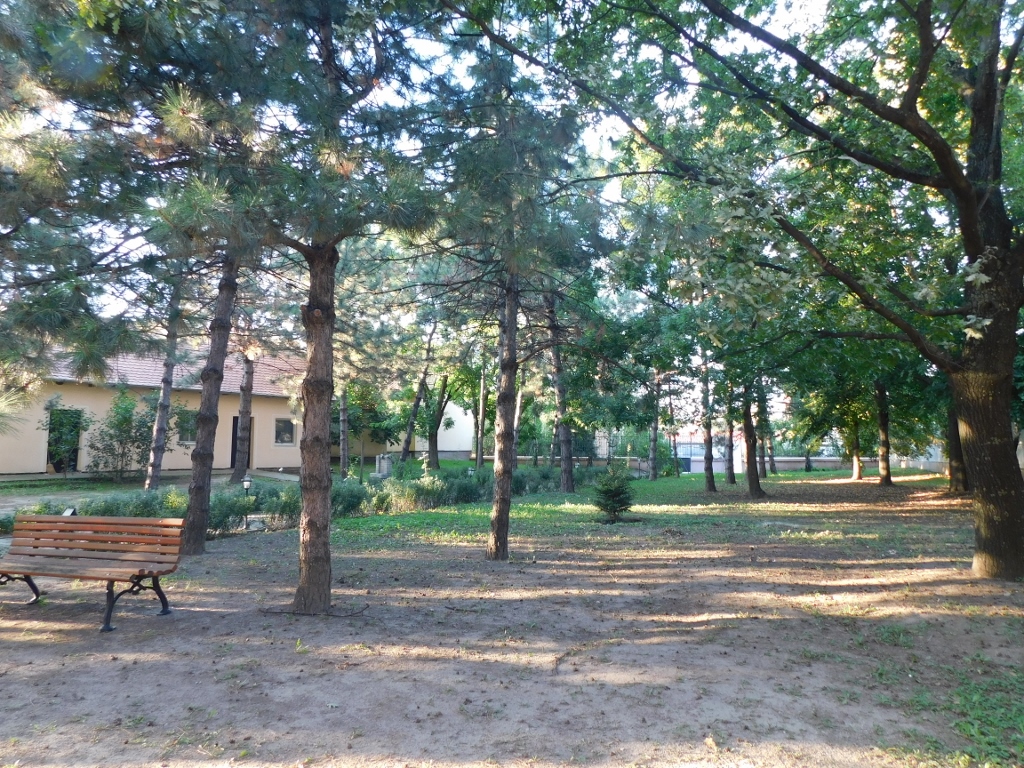 Courtyard of the Church of the Translation of the Relics of St. Nicholas “Mala-Gornja”
Courtyard of the Church of the Translation of the Relics of St. Nicholas “Mala-Gornja”
The church seen here was built in 1888, on the site of the previous one from 1765. The exterior decoration is harmonious and elegant, featuring a bell tower on the western side.
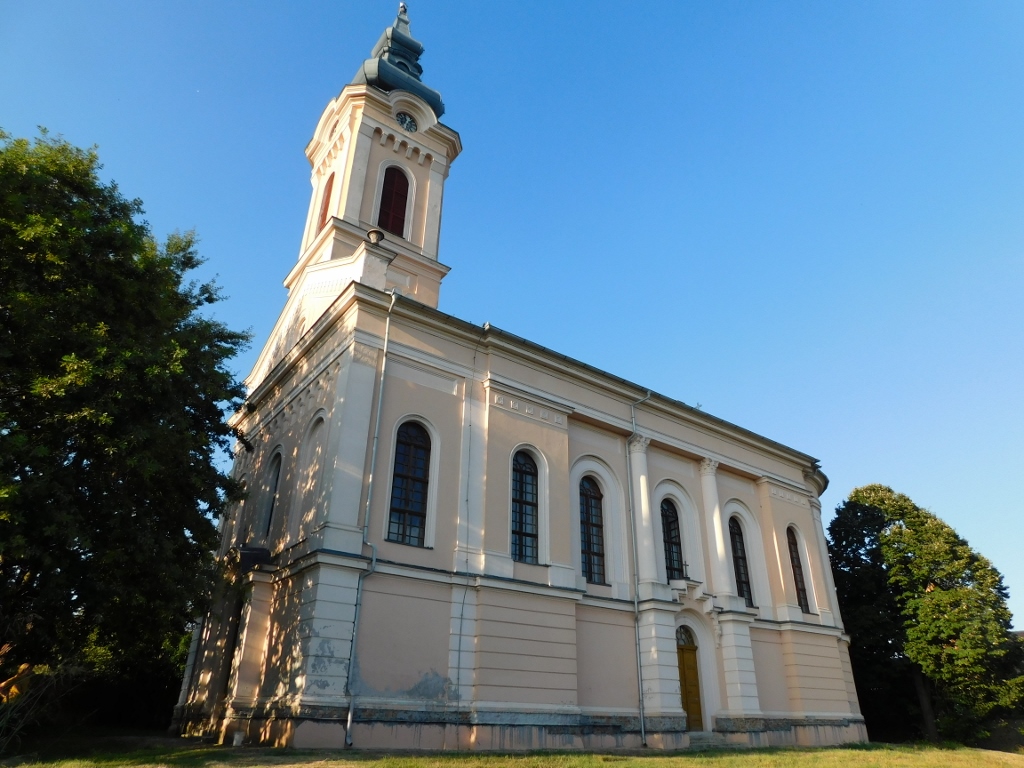 Church of the Translation of the Relics of St. Nicholas “Mala-Gornja”
Church of the Translation of the Relics of St. Nicholas “Mala-Gornja”
Some valuable books are kept at the church, while the iconostasis dates back to 1901. It is interesting that the painted decoration was done by Paja Jovanović (1859-1957) and this is one of the rare religious works by this renowned Serbian painter. Based upon the experience of the day, I didn’t expect to be able to see the iconostasis and the icons, but I still tried the door. Surprise – it opened!!! I was thrilled. As it turned out, there were ongoing works in the church, so perhaps that’s why it was open. On the other hand, Bilja and I carefully entered, didn’t touch or move anything, just took photos and then left the church. So, everyone was happy.
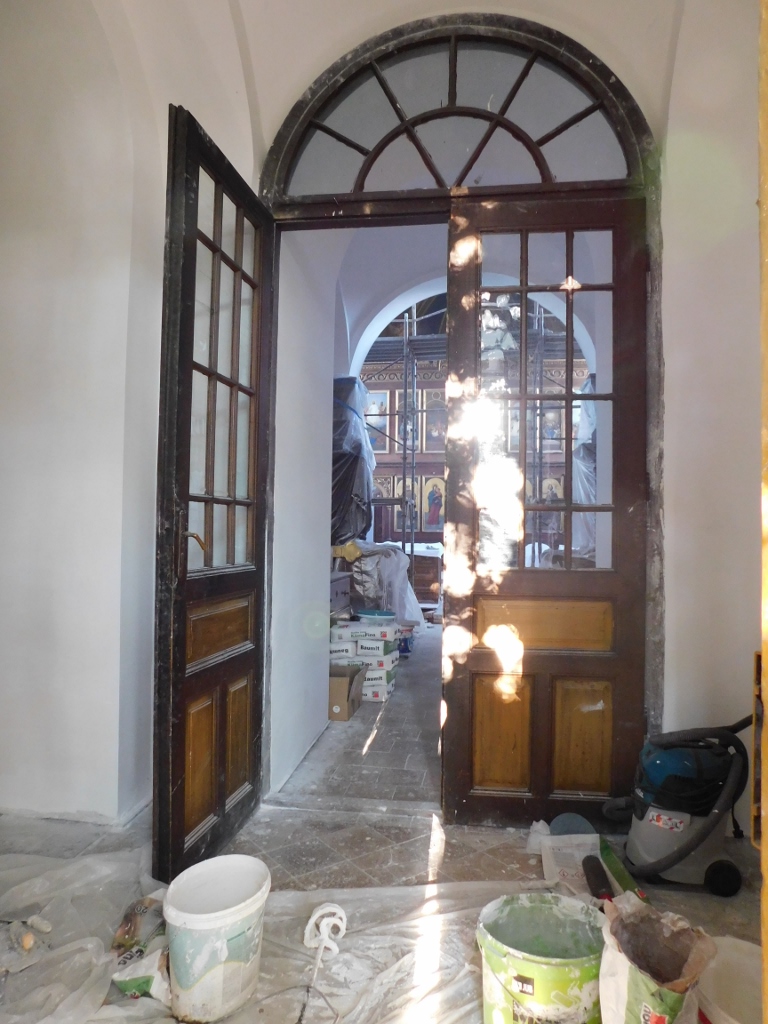 Church of the Translation of the Relics of St. Nicholas “Mala-Gornja”, the interior
Church of the Translation of the Relics of St. Nicholas “Mala-Gornja”, the interior
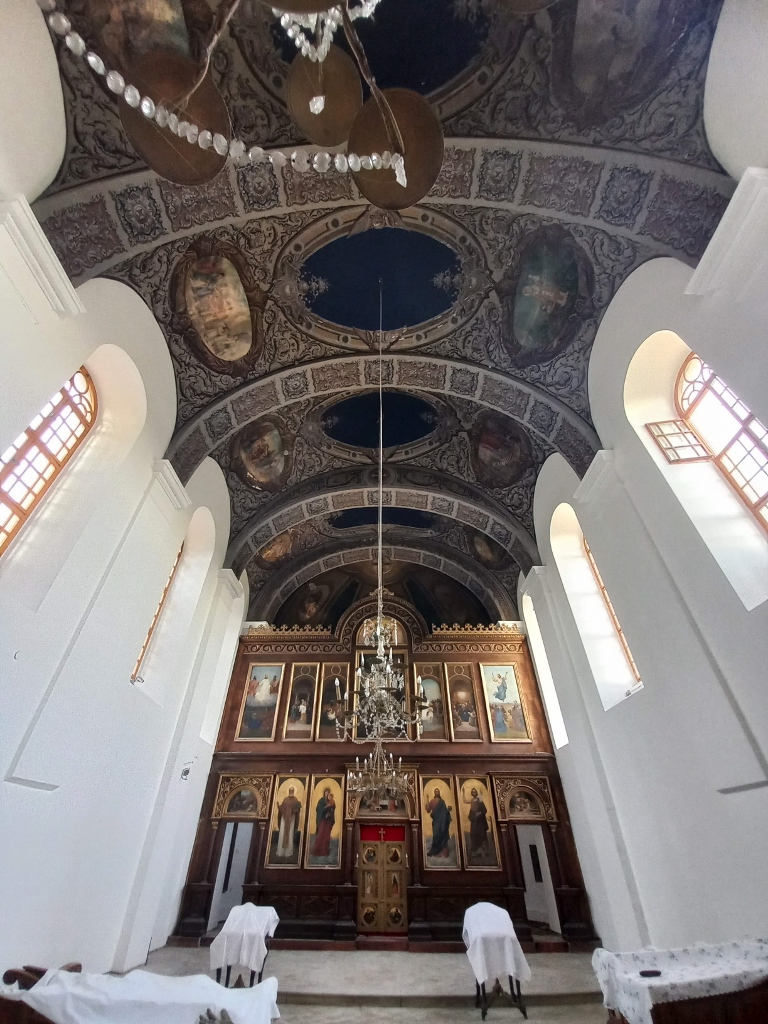 Church of the Translation of the Relics of St. Nicholas “Mala-Gornja”, the interior
Church of the Translation of the Relics of St. Nicholas “Mala-Gornja”, the interior
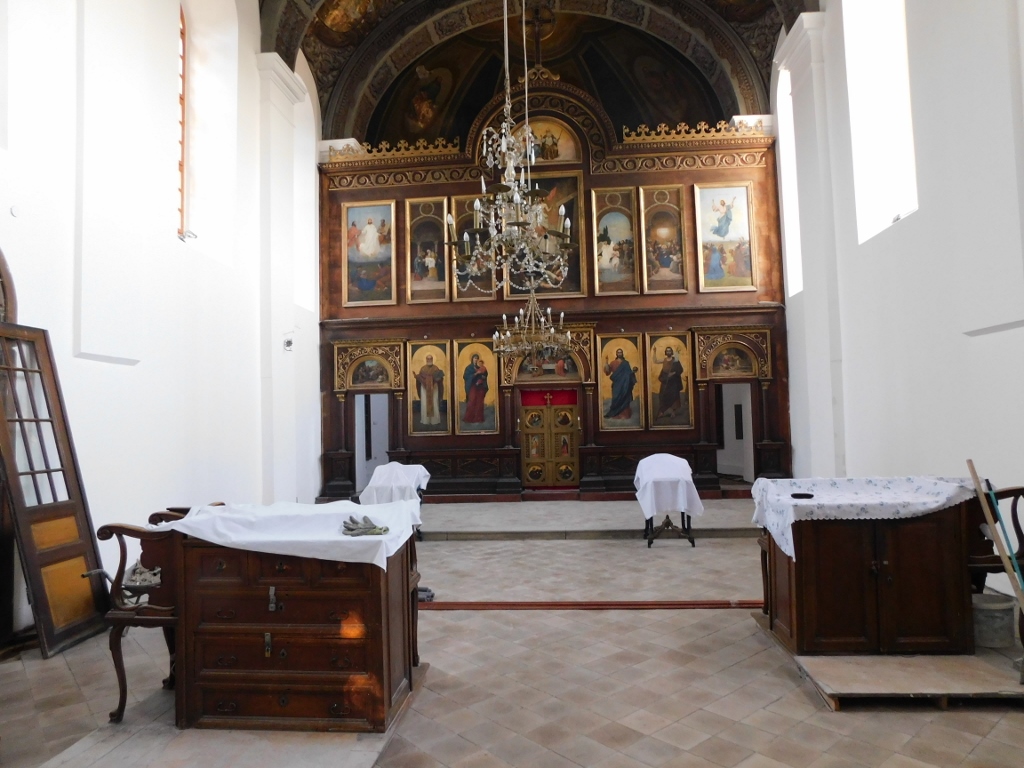 Church of the Translation of the Relics of St. Nicholas “Mala-Gornja”, the interior
Church of the Translation of the Relics of St. Nicholas “Mala-Gornja”, the interior
From the yard of this church, I could see the Romanian Orthodox Church dedicated to the Translation of the Relics of St. Nicholas on a neighbouring elevation. It seems a bit unusual to have three churches in the same (relatively small) place dedicated to the same saint, but who am I to judge. I can only assume that it, too, was closed this afternoon.
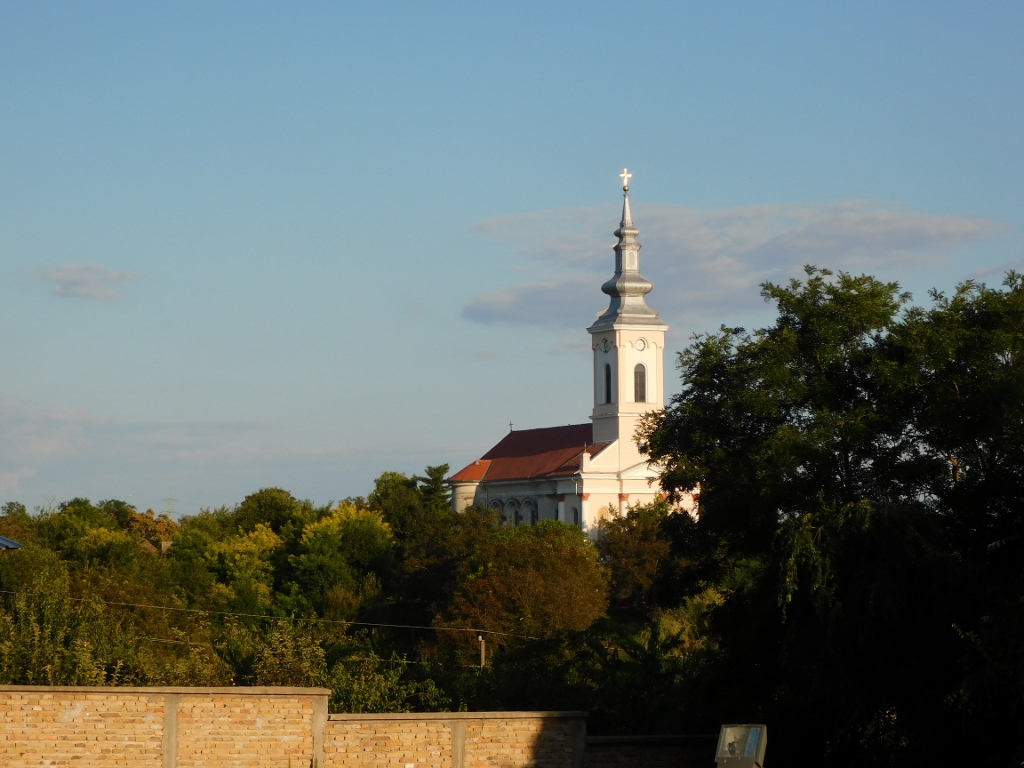 Romanian Orthodox Church of the Translation of the Relics of St. Nicholas in Dolovo
Romanian Orthodox Church of the Translation of the Relics of St. Nicholas in Dolovo
Therefore, we went to the birth house of Aksentije Maksimović (1844-1873), a Serbian composer and conductor (1847 is often mentioned as the year of his birth). In any case, the house was built in the first half of the 19th century and is considered a cultural monument, primarily due to its connection to this artist.
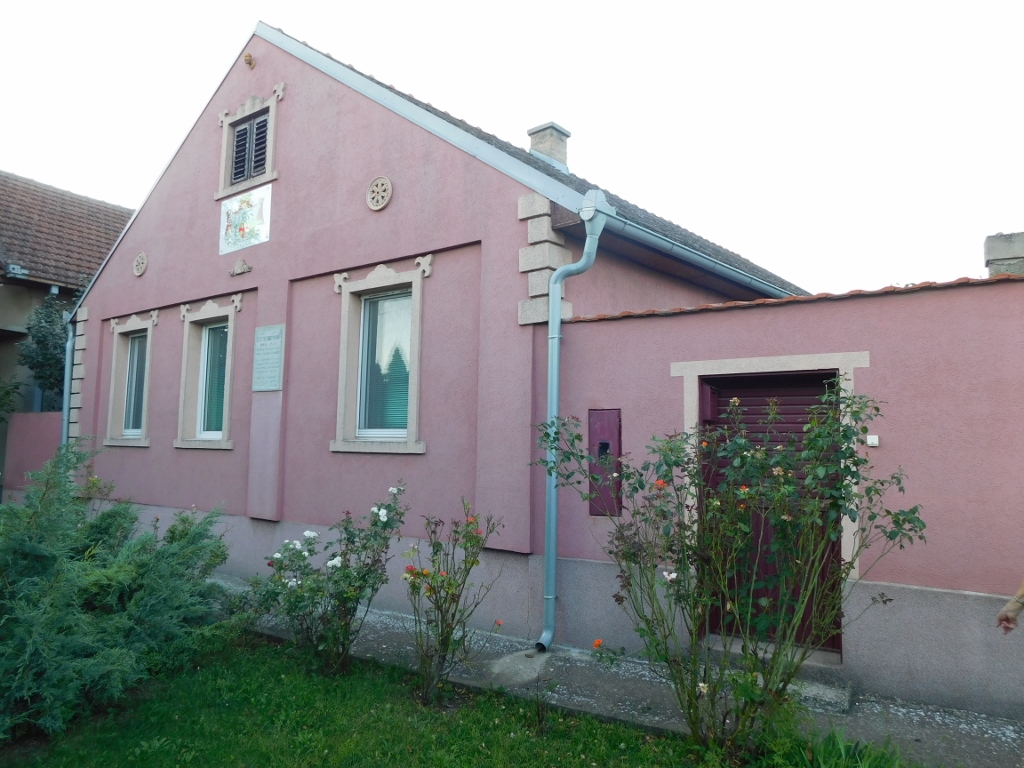 Birth house of Aksentije Maksimović
Birth house of Aksentije Maksimović
Maksimović died very young of tuberculosis, but he left behind a large number of compositions. The original facade of the birth house remains, featuring various beautiful architectural details and a sculptural portrait of the composer.
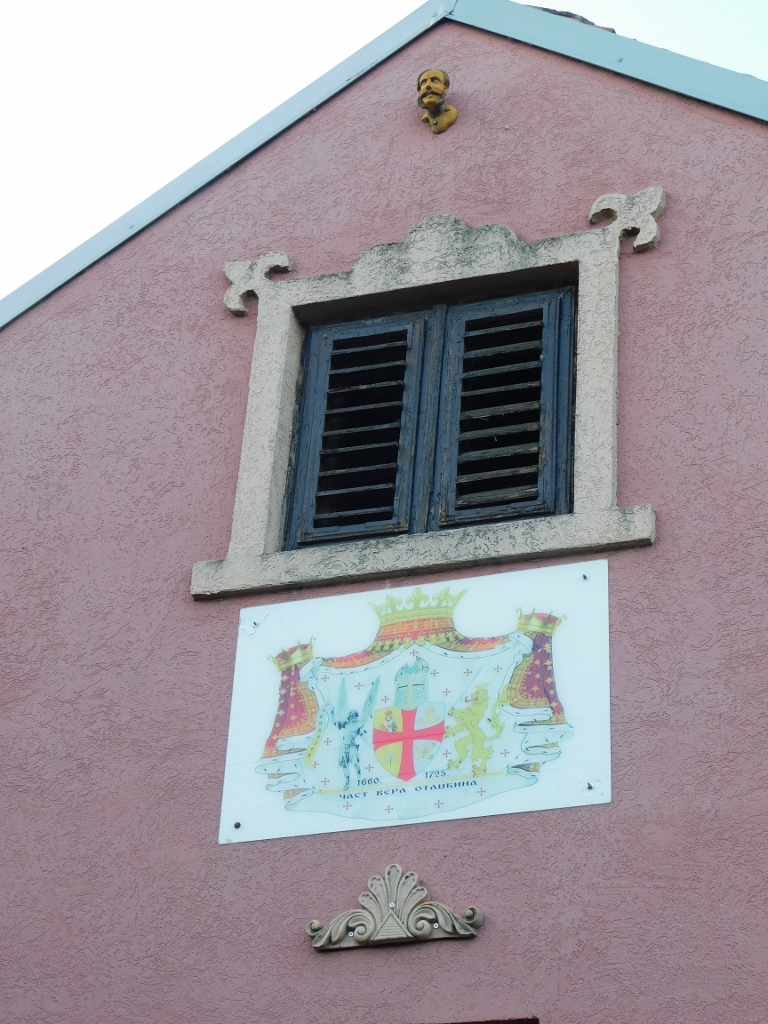 Birth house of Aksentije Maksimović, a detail
Birth house of Aksentije Maksimović, a detail
The composer also lends his name to the new primary school in Dolovo, built in the valley. However, this name was also borne by the primary school building constructed around 1780, now recognised as an immovable cultural property.
The building of the old school, named “Aksentije Maksimović,” was initially constructed for military purposes, officer residences and offices. It was later converted into a primary school, which is interesting in itself, but this is also quite likely the oldest building in Dolovo and possibly in the entire municipality of Pančevo.
But, when Bilja and I arrived here, there was some confusion. I didn’t know exactly which building this actually was since there were two old and quite dilapidated buildings near the place where the school building was supposed to be. The Stari park (Old Park) is in between. Then I saw an elderly man, so I asked him. He presented himself as an authority, but it’s very likely that he made a mistake. Anyway, he told us that one of those two buildings (north of the park) is a part of some company and the old school was the building located south of the park. Several families, including him and his wife, now live there!
Later, at home, I double-checked my materials and from a photo there it seems that it is indeed the building where that company is, but according to the description, it could easily be the one where this man lives. In any case, here is a photo that I took, showing a house that is old and in a ruinous state enough to be from the late 18th century.
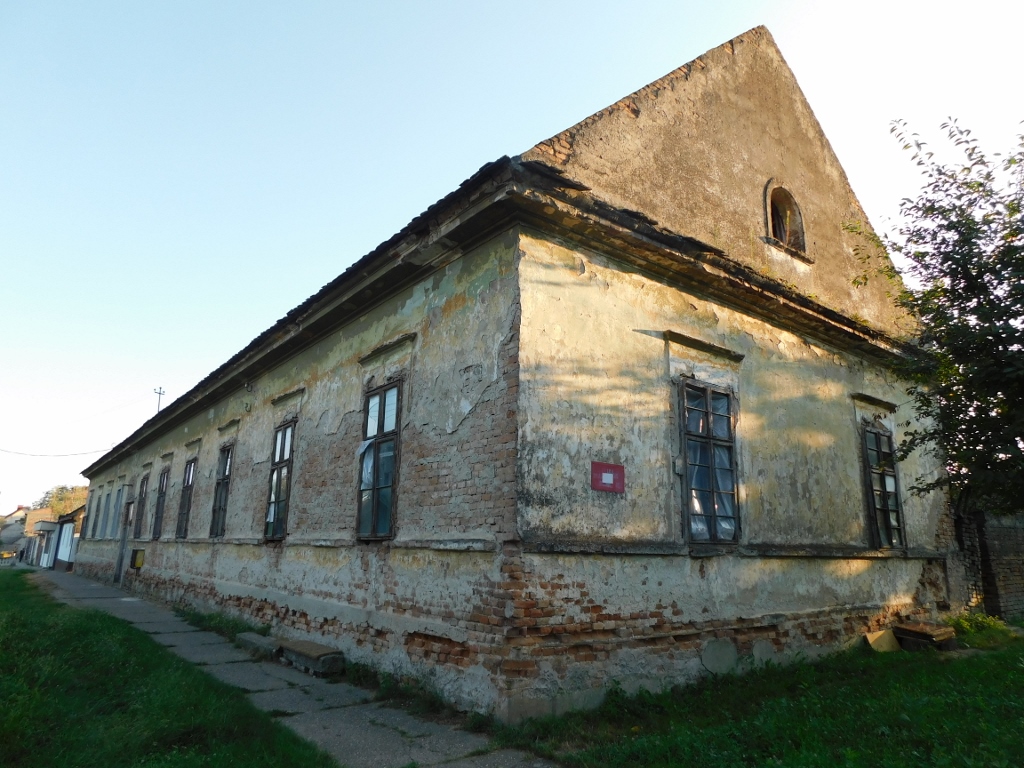 Potential building of the old primary school in Dolovo
Potential building of the old primary school in Dolovo
Due to the uncertainty regarding the exact building of the old primary school, I marked the location on the map at the place of the Stari park. If anyone goes to Dolovo, they can check both old buildings.
And with this, Bilja and I completed our very active one-day excursion. As I’ve mentioned before, I was certainly too ambitious when planning our visits for the day, plus I’ve learned the importance of checking when churches are open.
Nevertheless, I was extremely content with the day because I saw more places and structures of interest than I even knew existed in this area. I also got ideas for new visits and trips. All in all, not bad at all.